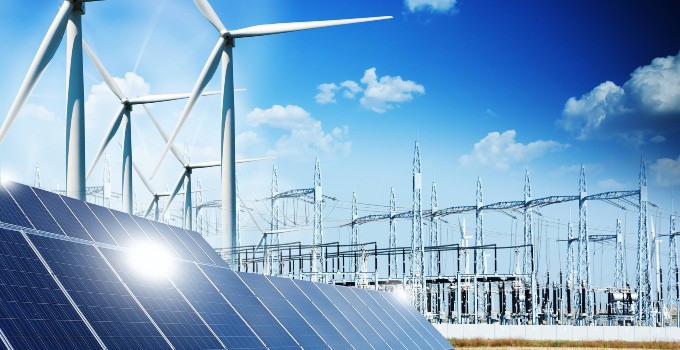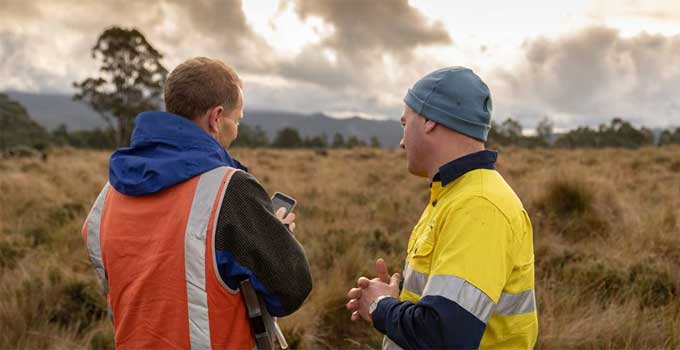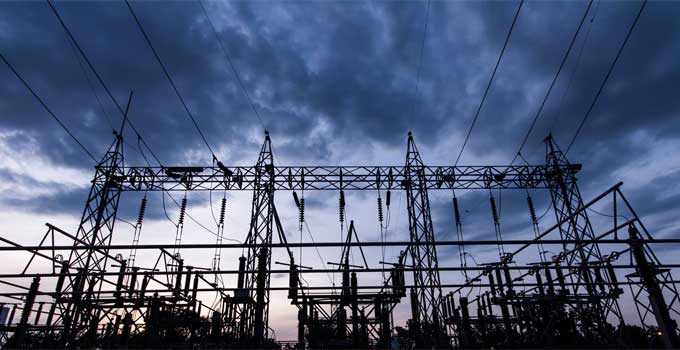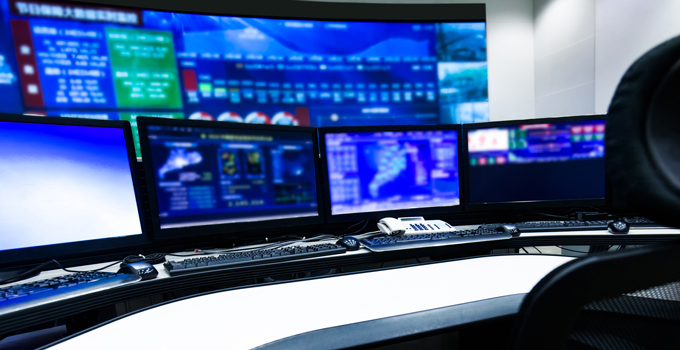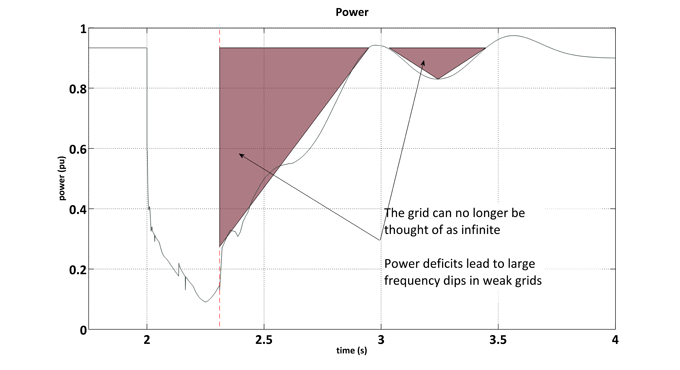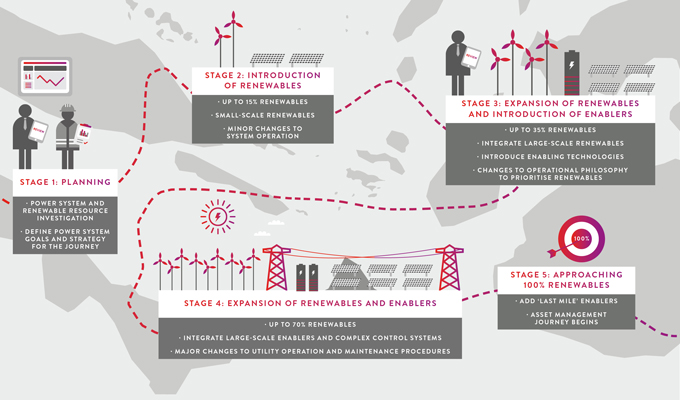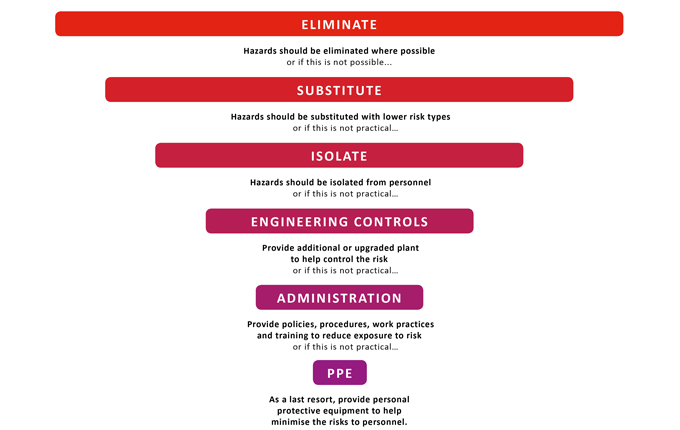How the BESS general arrangement drives safety, certainty, speed and value
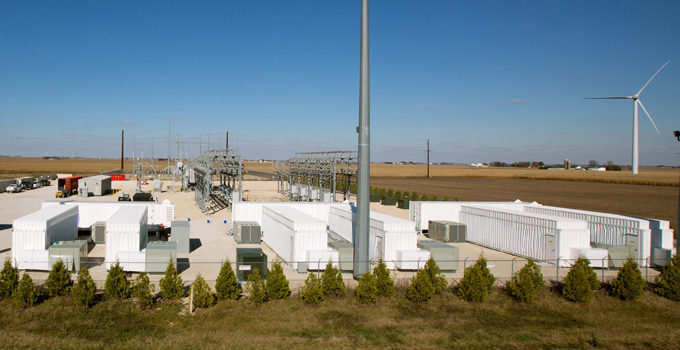
Despite the deceptively simple appearance of plug-and-play modularity, there’s a lot of crucial detail involved in achieving an efficient, safe and resilient BESS layout.
The layout or ‘general arrangement’ design will cover the BESS equipment (DC battery units/enclosures, PCS/inverters, medium-voltage transformers, switchgear, control and communications systems), the balance of plant (fire water tanks, buildings, laydowns, cable trenches, noise barriers, etc.) and the BESS substation.
Experience across the global BESS market shows that the devil is in the detail. In the push to accelerate renewable integration, there’s a danger that design decisions could be rushed, with too many details inadequately thought through or resolved. With a well-considered layout, a project is likely to move more quickly through approvals, construction and commissioning. A poorly designed project arrangement can embed inefficiencies, risks, delays and constraints that may be difficult to remedy.
Many developers have discovered that the layout of a BESS is a lever for risk, cost, speed and safety – with major implications for permitting, fire risk, insurability, environmental performance, lifecycle operating costs, augmentation and decommissioning complexity and, increasingly, community acceptance.
The BESS GA supports every phase of development
The responsibility for developing the BESS general arrangement (GA) shifts across the life of a project, and each iteration responds to the client’s evolving drivers, constraints and uncertainties. Early in development, the GA is typically prepared by the developer – or a consultant working under tight budgets – to support site selection, feasibility assessments and initial commercial decisions, often when project viability is not yet assured. As the project progresses into tender preparation, consultants refine the GA to define clear technical boundaries, ensuring EPC bids are accurate, comparable and compliant with planning requirements, fire safety and electrical standards.
Once an EPC contractor is appointed, the GA evolves into a vendor-specific detailed design, incorporating real equipment footprints, civil interfaces, constructability constraints and emergency-response provisions. The consultant – now acting as Owner’s Engineer – continues to review and challenge the GA to maintain design intent, ensure compliance and safeguard the developer’s interests throughout delivery.
Across all phases, a capable consultant adds value by anticipating the requirements of the utility and regulators, maintaining continuity through uncertainty, and designing with an appreciation of the developer’s realities – limited budgets, required studies, iterative decision cycles, and the constant question of whether the project will ultimately proceed – to ensure the final layout is safe, compliant and truly buildable.
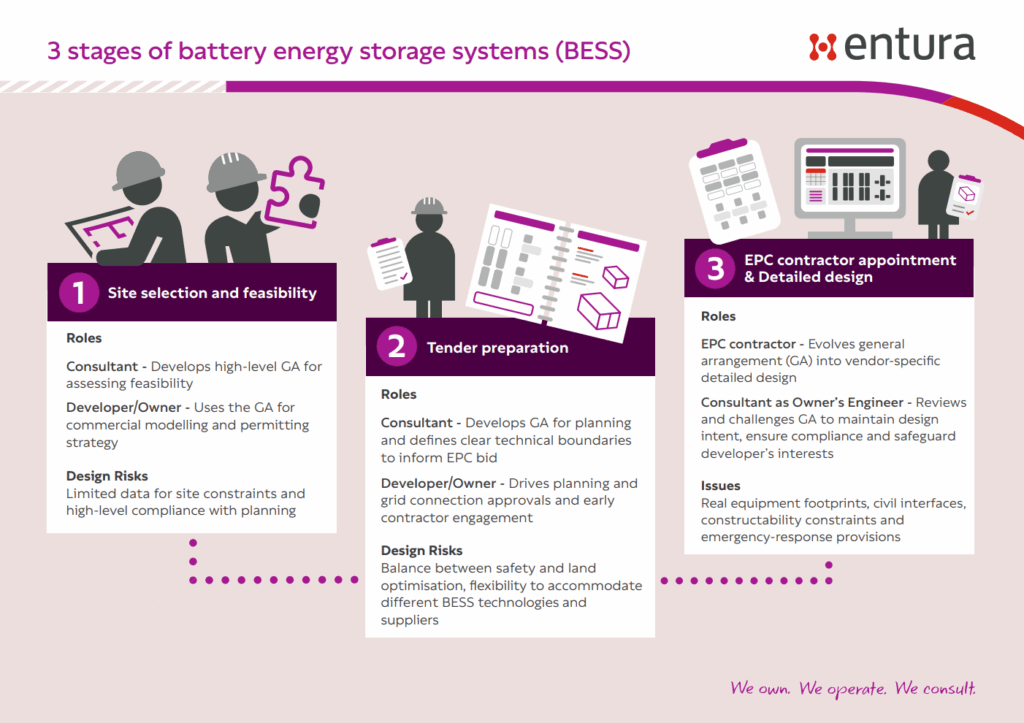
Here we explore why GA decisions matter so much, and the key considerations shaping best-practice BESS arrangement today.
Navigating easements in BESS design
A workable GA begins with an accurate appreciation of the site’s constraints. Easements and land-use limits are not peripheral issues: they define the true buildable envelope and shape the BESS solution. Treat easements as primary design parameters rather than later checks.
Early identification and mapping of utility and service easements, gas pipelines, and other buried assets helps avoid design rework and ensures that access obligations and no-build zones are incorporated into the layout from day one, thereby reducing the risk of project delays. Hydrology deserves equal weight. Natural drainage paths and any stormwater easements identified through hydrological studies can restrict equipment placement, influence grading, and affect the location of roads and trenches. Flood mapping, too, should inform early decisions about elevating sensitive equipment or siting infrastructure on less exposed ground.
In many Australian settings, bushfire clearance requirements can dictate a reduced density and more generous separation between battery enclosures and vegetation. Where environmental or conservation easements exist, they may remove sizeable portions of land from consideration and require careful alignment with approval strategies.
Gather all easement, hydrology, flood and environmental information as early as possible, integrate it into spatial modelling, and shape the first iteration of the GA around these constraints. This will avoid the pitfall of attempting to impose an idealised arrangement on land that can’t support it and will create a stronger pathway to feasibility.
Addressing fire risk and emergency response
Given the nature of modern lithium battery technologies, fire risk must be front of mind. The spatial relationships between containers and the provision of firebreaks and passive barriers influence not only the likelihood of thermal events, but also whether a fire will spread beyond a single enclosure. Industry standards and guidelines as well as local fire codes provide structured approaches for managing separation distances, ventilation and fire-mitigation measures. The frameworks are increasingly referenced by regulators and insurers to verify that system layouts limit multi-unit fire spread.
Fire authorities in Australia now often expect evidence of large-scale fire testing which goes one step further by assuming the entire container is alight and evaluating whether the layout could allow fire to spread to adjacent units. Importantly, compliance is not limited to holding a certificate: the installed system must be constructed and configured in the same manner as the tested system, typically in accordance with the OEM’s certified design, internal spacing, materials and fire-mitigation features. Any deviation may invalidate the test assumptions and compromise fire-propagation performance.
Importantly, BESS technologies and safety standards continue to mature, with new insights regularly emerging from operational experience, incident investigations and evolving test methodologies. As a result, GAs must be developed with adaptability in mind, recognising that future updates to best practice or regulatory expectations may influence separation requirements, access provisions or fire-mitigation design.
Asset protection zones (APZs) are defined through a bushfire study. Requirements can vary even across a single site, reflecting changes in vegetation density or type, but recent projects have needed at least 10 m of separation on all sides.
The GA should support effective emergency response by providing clear access routes, equipment isolation points and adequate separation for firefighting operations – ensuring that the layout not only minimises the likelihood of fire spread but also enables authorities to intervene safely and efficiently. It’s crucial that the firefighting response is supported by engineered containment so that runoff remains within controlled zones. Grading, bunding and drainage design are therefore integral components of the overall GA, rather than secondary civil features.
Hybrid sites demand particular care, as the original renewable facility may not have been designed with BESS-specific hazards in mind. Shared roads, substations, cable routes and drainage systems must be adapted so that the BESS retains its own safety envelope.
Designing for construction, operation, maintenance and evolution
Construction is a real test for the GA. If adequate allowance isn’t made in the GA for heavy vehicle movements, crane access, delivery sequencing and temporary staging, projects are likely to run into significant costs and delays.
The size of the construction compound, laydown area and temporary storage will depend on the project scale, the number of trucks and size of workforce engaged, and the delivery and installation schedule. Critically, the expected size and reach of cranes, as well as the dimensions and handling requirements of major components such as transformers, need to be identified early in development so that access routes, turning circles, lifting zones and hardstand areas can be properly incorporated into the layout from the outset.
While a number of critical considerations should be defined during the concept design phase, it is inevitable that certain elements – such as final medium-voltage cable routing, auxiliary systems, drainage and other balance-of-plant details – will only be resolved as the design matures. To mitigate the risk of future spatial constraints leading to reduced capacity or alterations that could adversely affect the business case or grid-connection obligations, the initial GA should be intentionally developed with flexibility to accommodate later design requirements without compromising the ultimate capability of the facility.
Over the operational life of the BESS, the GA will continue to influence efficiency and cost. Reliable access for technicians, sufficient working clearances around major equipment and logical circulation routes are fundamental to safe and effective maintenance. Designs that overlook these requirements may appear economical on day one but can impose persistent operational inefficiencies over decades.
Energy storage assets built today must remain adaptable to tomorrow’s operating environment. As batteries degrade, room will be needed for augmentation or expansion – through reserved space, scalable electrical infrastructure and clear routing for future cabling. The increase in land area or civil cost is likely to be outweighed by the long-term benefit of being able to let the BESS evolve without major disruption.
No project is an island
BESS projects, like any other major infrastructure developments, will be subject to significant public scrutiny on issues such as fire risk, noise exposure, visual impacts, traffic movements and ecological impacts. Landowners, communities, stakeholders and regulators will want to know what impacts can be expected and how these will be managed. Many of these factors can be moderated to some extent by strategic placement and screening.
A clear and well-engineered GA needs to capture these considerations. It will demonstrate to regulators, stakeholders and the local community that project risks and impacts have been appropriately investigated, understood and managed – which will help build social and environment licence. A thoughtful GA is one of the most effective ways to build confidence in a project.
Make your GA a strategic advantage
As we’ve explored, the BESS GA is not just a technical document. It’s a set of strategic decisions where safety, social and environmental licence, operability, optionality and commercial performance intersect. Civil, electrical, mechanical, control, environmental and safety factors all influence – and are influenced by – the site arrangement, which makes it essential to bring an array of different perspectives and disciplines together early to avoid unforeseen flow-on implications and clashes among disciplines. At Entura, we integrate these streams to fully stress-test our designs and advice from all angles.
Now is the time to treat your BESS’s GA as one of the clearest opportunities to manage risk and materially improve your project outcomes.
To talk with us about your BESS project, contact Patrick Pease (Business Development Manager – Power & Renewables) or Donald Vaughan (Technical Director Power).
ABOUT THE AUTHORS
Senior Renewable Energy and BESS Engineer Dr Rahmat Khezri has vast professional and technical experience with batteries. He has worked in the renewable energy and battery industry in project delivery from design, business case and feasibility analysis to operation and construction. Rahmat has managed several utility-scale BESS projects during his time with Entura, overseeing successful delivery while ensuring compliance with industry standards, optimising performance and managing key stakeholder relationships. Before joining Entura, he worked on projects supported by Sustainability Victoria for technical design and business case development of ‘second-life BESS’ using retired batteries of electric vehicles. In 2023–25, he was recognised by Stanford University as being in the top 2% of scientists worldwide for 3 consecutive years.
Dr Chris Blanksby is a Principal Engineer who uses his expertise in solar and battery technologies to provide strong leadership in delivering a range of services to the industry. Chris is Entura’s lead battery specialist and has been technical lead on several key projects in the Australian battery industry over the past years. Chris leads multidisciplinary teams in feasibility, design and construction supervision for utility-scale solar, battery, and hybrid integration projects. Projects Chris has led include Owner’s Engineer and independent engineer, feasibility studies, construction supervision, tariff reform and power purchase agreements, resource and energy yield analysis, project technical specification and principal’s project requirements, technical due diligence, model and control system development and network integration.
What to consider when you’re thinking about a synchronous condenser
Depending on when and where you want to connect your new solar farm or wind farm, the network service provider or your consultant may tell you that you’ll need a synchronous condenser. That may not be good news, because these machines don’t come cheap and they usually don’t provide a direct revenue stream. What should you do next?
Do you understand why you need a synchronous condenser?
The first step is to understand why you need the synchronous condenser. The inverters at the heart of most solar farms and most modern wind turbines need a strong electricity grid to push their energy into. If the network is not strong, the inverter is likely to fail to switch at the required times, swing against the power system like a pendulum, and distort the waveform, causing harmonics. The synchronous condenser overcomes this, strengthening the power system in the local area by forcing the network voltage into a near-perfect sine wave of the required size.
The rules have changed!
The burden for providing system strength in Australia’s National Electricity Market has shifted significantly. Previously, new generators bore the primary responsibility under a ‘do no harm’ principle.
As of December 2022, ‘transmission network service providers’ (TNSPs) became ‘system strength service providers’ (SSSPs) and are now responsible for proactively providing a baseline of system strength across their networks.
Furthermore, new connecting parties now face new access standards and ‘system strength mitigation requirements’. This framework offers generators two clear choices to address their system strength impact: (1) pay a system strength charge, which is a fee reflecting the cost for the SSSP to provide the necessary system strength, or (2) self-remediate by installing their own solutions, such as synchronous condensers or grid‑forming inverters, to mitigate their impact.
At Entura, our experience so far indicates that many generators are actively exploring the self‑remediation option, prioritising operating cost over capex for their project.
Self-remediation may mean using synchronous condensers. However, there are also other solutions to system strength, which we’ll discuss below.
Is it possible to predict the need for a synchronous condenser earlier?
There are ways that you can predict at the project pre-feasibility stage that a synchronous condenser might be needed, before the network service provider becomes involved. Take a look at other renewable energy installations that have been constructed recently in the same region; if they needed a synchronous condenser, you almost certainly will too.
Consider where the installation is in the grid. If the answer to any of the following questions is yes, you will likely need a synchronous condenser: Is your installation remote from all traditional generating stations? Has a large traditional generator shut down in the area recently? Are other generators in the area routinely constrained due to network stability challenges?
Simple calculations can be completed based on information that most network service providers publish on their websites, including network constraints and fault levels. These calculations aren’t always definitive, but they will offer significant insight.
What do you need to specify?
It is best to specify the exact function that the synchronous condenser must achieve. Typically, this means specifying the fault current contribution that is required from the machine and leaving it up to the manufacturer to decide the optimal machine design including the headline MVA rating. Once these headline values have been determined, consider the following questions, each of which has a substantial cost impact:
- How much reactive power do you need the synchronous condenser to absorb? Typically these machines can only absorb approximately half of their headline rating, so don’t ask for too much unless you have deep pockets.
- Do you really need inertia that is greater than the manufacturer’s standard? Synchronous condensers are known for having inertia, but asking for inertia that is greater than the manufacturer’s standard will result in substantial additional cost and usually results in no additional revenue stream.
- The synchronous condenser is being installed to provide system strength, so do you really want it to be able to supply reactive power indefinitely? Perhaps 60 seconds would be enough.
- What are the impacts of planned or unplanned outages of the synchronous condenser? Do these impacts warrant increased redundancy or spares retention? We’ll talk about this in more detail below.
Are some cost savings not worth making?
For a synchronous condenser project, there are some measures that, on the surface, might appear to be potential cost-saving considerations. Can you omit the transformer tap changer? Could the cooling equipment be downsized or even omitted? Can you connect to the station 33 kV busbar? Detailed analysis is needed to answer these questions definitively. In our experience, however, the answers to each question have been emphatically no.
If you need the synchronous condenser to operate close to its rated reactive power absorption limit, you’ll need a transformer tap changer. Similarly, if the machine connects to a 33 kV busbar, fault levels will become unreasonable and an even larger machine will be required.
What’s the best contracting model?
Your choice of contracting model will depend on your appetite for risk and the sensitivity of your schedule. A typical solar or wind farm project is very schedule-sensitive, which suits an all-inclusive turnkey project delivery including everything from civil foundations, fencing and drainage through to integration with the farm’s control system. But this delivery mode comes at a price, and there are few Tier-1 equipment suppliers prepared to take on this model. The lowest-cost suppliers will be likely to want to put your machine onto a ship, point it in your general direction, and send you the invoice.
Whatever your contracting model, one of the largest risks to projects is the adequacy of the power system models. You need to be confident that the original equipment manufacturer (OEM) understands the market operator’s model requirements and has the skills to comply with them.
Can the machine offer economic benefits?
Two possible revenue streams could potentially flow from installing a synchronous condenser. By sizing the synchronous condenser to provide the reactive power required from a solar farm by the electricity rules, it is possible to operate the solar inverters and the main transformer at a higher power factor. This has the potential to increase the power output and consequently the revenue from the farm by up to 7%. A proponent could also install an oversized synchronous condenser and sell the spare system-strengthening capacity to another renewable farm in the same region. In the future, inertia and system-strength markets may evolve in ways that provide direct revenue streams for the synchronous condenser.
Redundancy considerations: Is one syncon enough?
Most new generators initially opt for a single, larger synchronous condenser to minimise upfront capital expenditure and ongoing operational expenditure. However, this decision inherently introduces a significant operational risk: the potential for severe output constraint if that sole synchronous condenser becomes unavailable. While synchronous condensers are generally highly reliable, mechanical and electrical failures can occur, and the lead times for repairs or replacement components can be substantial, leading to prolonged outages.
For asset owners considering the future divestment of their renewable energy project, this redundancy factor becomes a critical due diligence item for potential purchasers. A single point of failure for system strength support will be scrutinised. A prospective buyer will likely conduct a far more pessimistic assessment of the probability and duration of generation curtailment due to a synchronous condenser being unavailable, compared with the assessment of the original developer. This increased risk perception can directly and negatively impact the valuation and sale price of the entire energy park.
Is there an alternative?
The inverters at the heart of most solar farms and most modern wind turbines are changing. Until approximately 2023, they exclusively used a technology called ‘grid-following inverters’, but a newer ‘grid-forming inverter’ is breaking into the market. These inverters are more expensive at the moment, but that’s changing rapidly. The newer inverters are much less sensitive to system strength and can typically be operated with the base level of system strength that the TNSP is required to provide. Applications are now emerging in which changing the inverter eliminates the need for a synchronous condenser.
Putting it all together
The most cost-effective projects are often those that link multiple technologies – such as a wind farm with modern wind turbines, static VAr compensators and more than one synchronous condenser. These technologies were not designed to work well together, but with carefully coordinated controls they have done so in practice, providing the required system strength, voltage control and inertia for a successful minimum-cost project.
If you would like to find out more about how Entura can help you overcome electrical challenges for your renewable energy projects, please contact David Wilkey or Patrick Pease.
ABOUT THE AUTHOR
David Wilkey is Entura’s Principal Consultant, Secondary Electrical Engineering. He has more than 25 years of consulting experience in electrical engineering across Australia and New Zealand, focusing on the delivery of advisory on secondary systems and power systems engineering. David’s expertise spans all areas of electrical engineering with a particular focus on electrical protection, power system studies and rotating electrical machines.
MORE THOUGHT LEADERSHIP ARTICLES
Renewables in remote mines – a litmus test for the wider renewables transition
Entura’s Greg Koppens has recently returned from the Energy and Mines Summit in Perth, where he led the ‘Think Tank’: a collaborative session addressing the challenge of powering process steam requirements from renewables-generated electricity. Here he shares his observations on the rise of renewables in the mining industry …
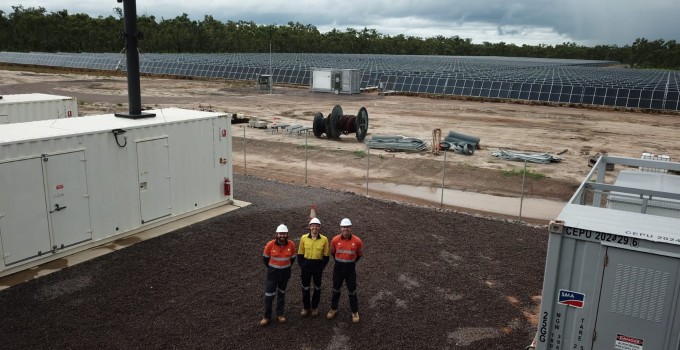
Australia’s mining industry is beginning the peak phase of its energy revolution. However, I find it unfortunate that this exciting fact is invisible to regular people. It is happening in remote areas on mining leases, inaccessible to the public. Each project alone is not sensational enough for media attention, but added together these projects are nothing short of a technology revolution. For remote mining sites to have a solar farm is now standard practice. In many cases this is backed up by battery storage and a handful of mines have onsite wind turbines.
The past: fossil-fuel driven mines
Australia is world-renowned for our mining industries, with mines of virtually every resource throughout our country. Up until about ten years ago, nearly all of Australia’s mines ran completely on diesel or gas. In most cases diesel was trucked in, or gas was brought in via pipeline. Most of these mines have energy expenses in the tens of millions of dollars per year. A small change in the oil price can drastically impact the mine’s bottom line.
If there’s one doubtless fact about mining, it’s that miners are practical people. They are problem solvers, and they know what works. With the boom-and-bust nature of resource markets and shareholder responsibilities, finances must be well managed.
The present: hybrid renewables power generation
At the Energy and Mines Summit, there was no discussion about whether it’s a good idea to consider renewables in the mix of power generation – it was simply a given. This is an industry in ‘early maturity’: it is no longer pioneers running a trial. Several systems are in the order of 100 MW capacity. Renewables are a tested and proven business decision. Everyone has crunched the numbers on their sites and, while each project has unique site-specific requirements, the conclusions are unanimous. The frontier is now getting access to skilled people, there is community engagement for siting of large assets and mutual benefits, and the industry is exploring emerging technologies such as electric fleet.
We now have all the technology needed to harness the power of the wind and the sun in an 80/20 mix with fossil fuels. Or a 50/50 mix when the system has solar power alone. And this is what is being implemented in practice all over Australia. We can do it in a way that achieves targets for price, reliability, service life, operability, maintainability and environmental impact. This greatly reduces the costs and risks of intermediate services such as refining and transportation as well as exposure to the global oil price. Mining companies are taking control of their energy supply by either owning the energy and storage assets or building well-defined low-risk partnerships.
The big project: transitioning the Pilbara to renewables
At the conference there was some focus on the Pilbara, which is a huge and complicated energy consumer, consuming 16 TWh (16 million MWh) of electricity per year, mostly coming from gas.
On the surface, it seems to be very low hanging fruit to quickly construct a few solar and wind assets to shift this picture. However, in the interests of the best long-term outcomes, the area needs planning, consultation and coordination. The Western Australian Government has developed a plan for ensuring that common-use infrastructure is used where possible, rather than risking having multiple redundant assets owned by different corporations. Aboriginal and community participation is recognised as crucial for the appropriate siting of wind, solar and transmission equipment.
The near future: electric fleet
Approximately half of a typical mine’s energy needs can be met by onsite electricity generation. The other half currently requires diesel fuel to run a fleet of light vehicles, monstrous ‘haul’ dump trucks such as the 250 tonne CAT 793, and every piece of mobile machinery in between. These mobile machines are the next target for reducing costs, carbon emissions and labour. Several trial projects are happening. For underground mines, where diesel has previously been used, huge ventilation fans will need far less power when there are no exhaust fumes to expel.
Machine manufacturers are developing a wide array of specialised battery electric products. In some applications, there is battery swap technology, as in modern power tools. In other applications, a fixed battery plugs in to recharge, like in an electric car. There are also trolley systems, akin to a tram or train. The best system for each job depends on the application.
Transitioning to a fully electric fleet will significantly increase a site’s electricity needs, with the biggest chargers running at 6 MW at full power. We are expecting to see sites’ electrical grids upgraded soon to integrate this high-power charging.
What is Entura doing?
At Entura, in addition to electrical generation and distribution design, we have specialised capabilities in control systems and power system studies for mining projects. Our microgrid control system (MCS) uses standard and reliable industrial Allen Bradley hardware to monitor and control the power station assets. We have a field-proven core algorithm for maintaining a priority of reliable power supply including backup/reserve supply, while making the greatest use of wind and solar where available. We’ve proven this process in our existing installations in the field and we lead the industry in methodology, practicality and voltage/frequency management.
We’ve seen the real benefits these systems bring to our clients and communities, both at mining sites and in other remote locations. Entura has a long history of design, formation and operation of microgrids throughout Australia (such as King Island, Flinders Island, Rottnest Island, and at mining sites such as the Agnew gold mine) and in the Pacific region (including the Cook Islands, the Federated States of Micronesia, Tonga, and the Solomon Islands, to name just a few).
Contact us if you’re interested in unlocking the full potential of microgrids for your operation or community, or if you’re interested in ways to increase your use of renewable energy.
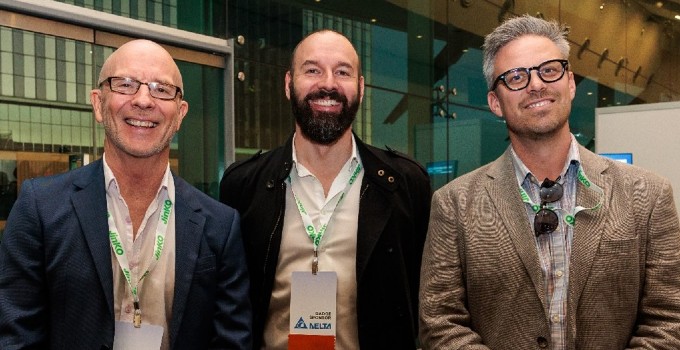
[Image immediately above] Entura’s Patrick Pease, Greg Koppens and Mark Richardson at the 2025 Energy and Mines Summit
[Top of article] Greg Koppens (centre) onsite at Jabiru Power Station, Northern Territory
ABOUT THE AUTHOR
Greg Koppens is Entura’s Principal Control Engineer Hybrid Renewable Systems and previously led Entura’s secondary electrical engineering team. Greg’s experience spans power, oil and gas, and mining, including onsite roles. With over two decades of detailed design experience, Greg facilitates collaboration between engineering disciplines and other stakeholders to solve complex problems. He regularly shares his extensive expertise with the mining sector to advance their decarbonisation goals. Find out more about Greg in our podcast series here.
When the lights go out
Major power outage events, like the one that affected Spain and Portugal this April, can be enormously disruptive and even deadly. Here Entura’s Technical Director Power, Donald Vaughan, considers the complex factors at play and their implications for grids everywhere ...

The recent power outage on the Iberian Peninsula provides a serious opportunity for reflection. Many articles have been published that try to explore the seconds and milliseconds after 12:32 PM on 28 April 2025 while only having access to the grainy frequency plots and approximate timelines that have been released (to date). This is not one of those articles. Nor is it an article that will lay blame on a particular technology or energy source. Instead, I will expand on the physics at play in this instance and reflect on whether current network security practices are adequately catering for changes to the power grid.
The physics
The power system is governed by the laws of physics, as is normal in the physical world. Quite a few of these laws tend to gang up on us during a power system event[1].
(i) conservation of energy
(ii) Ohm’s law
(iii) Newton’s laws of motion
and, of course,
(iv) Murphy’s law.
We’ll talk about the first three now and the last one later.
We learn very early that energy can neither be created nor destroyed (law i, above). This is at the heart of a power system event. The power system supplies loads by supporting voltage across the network that supplies millions of parallel loads. Each of these loads converts electrical energy into another form of energy based on the voltage it sees and its internal characteristics. This will continue as long as the voltage profile is maintained (law ii). So, demands take energy out of the power system regardless of what generation events occur.
We know that the main trouble in the recent Iberian event started when a large amount of generation stopped in southern Spain. This led to an imbalance between generation and demand in that region. That imbalance is immediately addressed through the inertial action of synchronous generation across Europe (law iii).
If interconnection were perfect, the burden of this inertial response would be shared perfectly across Europe and we probably wouldn’t be talking about this event quite as much as we are. Yet interconnection is rarely perfect (law ii). The frequency in Spain started to move away from frequency to the east and the AC interconnection to the east opened (which avoided the disturbance that stems from loss of synchronism). This should have been some help to the falling frequency in Spain given the eastward flows at the time. Under-frequency load shedding (UFLS) occurred around this time and should also have helped. It seems that the voltage disturbance that then occurred as a result of all these trips was the last straw.
Network security practices
It would be a gross over-simplification of network security practices to say that the power system should not lose customer load for the loss of one generation or network element (N-1 redundancy). The event on 28 April is way beyond that. Typically, for larger events, the grid should fail safely. We’ll look at that definition of ‘safely’ later. For now though, we can see that the grid did, in fact, try to fail gracefully:
- The AC interconnectors opened to avoid damaging loss of synchronism.
- The under-frequency load shedding operated to try to preserve supply to some customers and keep the grid up, so as to reduce the duration of the interruption.
- Other generating unit controls acted to either increase output or trip to avoid damage.
We see in the Iberian Peninsula outage, as we did in the major South Australian blackout in 2016, lots of independent protection operations slowly but surely weakening the grid to the extent that it is no longer viable. Each of these protection operations undergoes scrutiny after an event of this nature, and will likely lead to some changes in Spain and France as was the case in South Australia.
The 28 April event appears to be quite slow in comparison to some other network blackout events. Even so, the event lasted less than 20 seconds and had 2–3 stages within it. One of the bases of design of the AC network is that it can generally operate with minimal, fast coordination even under large events. Control relies on observation, computation and action. So, to manage an event, a control system must measure what it needs to reliably determine what control actions it must make, and then take those control actions (assuming it can control all the elements it might need to control) in time for them to have an effect. If we think about a need to deftly control the response of individual units (or control systems) in an unusual way in a short period of time, then we can quickly conclude that this may not be possible.
If we can’t manage these events in real time, we have three courses of action:
(i) Physical plant
We could design networks, network supports, and network and generator protection and control systems to be more robust in the face of large power system events, thus decreasing the likelihood of unnecessary cascading protection operation.
This would include better interconnection, more dynamic reactive support (separate from generating units and demand), system-level protection schemes, and a review of generating unit protection settings to ensure generator capability rather than network requirements setting operating limits
(ii) Dispatch rules
We could change dispatch to provide greater margin for real and reactive power control as determined by the security risk and the cost to mitigate it.
We could continue the traditional N-X approach to system supports or we could use a stochastic approach to determining system support requirements (weighting the probability of an event occurring against its impact). Either way, we’d have to pay an ‘insurance’ premium at each dispatch interval to make large-scale system outages less possible.
(iii) Restart planning and capability
We could make recovering from major blackout events easier and faster.
We think about these events in terms of how often they occur (which is what the first two course of action cover) and how long they last. System operators typically have generic plans for system restart that rely on starting synchronous plant and re-energising transmission systems and eventually customer demand. This can be made easier with interconnection. It can also be made easier with good visibility of voltages and voltage profiles across regions (and the tools to control them). Often, for big events like in South Australia in 2016, the network is left somewhat stricken from equipment damage. System restart efforts are often hampered in this scenario because plans need to be improvised to adapt. This depends on the skill, knowledge and experience of the operators. Some jurisdictions have simulated such events as part of training operators.
The fourth law
We know that ‘anything that can go wrong will go wrong’. Seemingly simple things can undermine the best laid plans and the best intentions. We often can’t plan for these things specifically, although HAZOPS, root-cause analyses, scenario simulations and reviews can help us understand where the problems may lie and give us a chance to close loop-holes before they become SNAFUs.
Major power outage events are serious. They often lead to loss of life or injury, and the recent Iberian Peninsula event was no exception. They also always have an economic impact, which is not always fairly distributed. As an industry we need to improve how we manage them. We also need to get better at talking about technical issues in a political environment. If there’s a risk of blackouts, we have a duty to not only mitigate that risk within the current rules but also advocate for rule changes if that mitigation is inadequate. To be most productive, this conversation should happen in a techno-economic environment. The automatic debate after power system events often focuses on the role of renewables, commercial interests and the like, which may sometimes be entertaining but inevitably affects the techno-economic outcomes in a negative way for everyone.
ABOUT THE AUTHOR
Donald Vaughan has over 20 years’ experience providing advice on regulatory and technical requirements for generators, substations and transmission systems. He has worked for all areas of the electrical industry, including generators, equipment suppliers, customers, NSPs and market operators. Donald specialises in the performance of power systems. His experience in generating units, governors and excitation systems provides a helpful perspective on how the physical electrical network behaves.
Image: Basil James on Unsplash
[1] There are more laws, but these are the main and most accessible.
What have we learnt about renewable microgrids and remote area power systems?
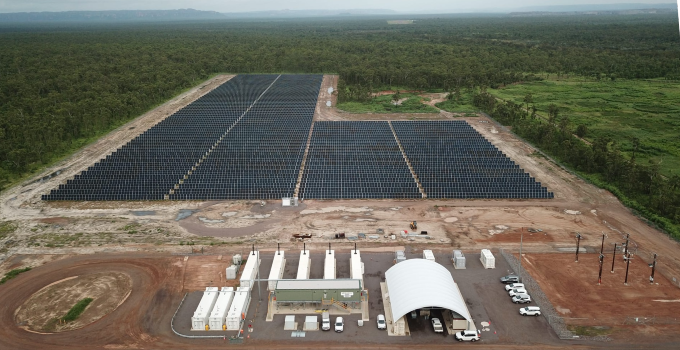
With the evolution of modern inverter and renewable energy technologies, it’s become possible to build microgrids with very high renewable penetration. These renewable solutions are revolutionising electricity sustainability, reliability and access in many far-flung locations – such as Pacific islands, remote locations around Australia, and on mining sites.
High renewable penetration allows operators of off-grid microgrids to extract maximum value from their installed solar, wind or other renewable generation while minimising the use of fossil fuels, such as diesel. It’s a win-win for the financial bottom line and emissions-reduction goals. If the microgrid connects with a broader power system, the benefits of reducing reliance on externally sourced energy are significant too.
Establishing a relatively simple microgrid with modest fuel-saving targets doesn’t have to be particularly complex. It’s within the reach of current technology and practice to be able to optimise microgrids to all but eliminate the use of fossil fuel (with the related advantages of eliminating fuel handling, shipping, etc.). However, careful thought must be given to the distinct nature of the microgrid: its customers, energy sources and storage options.
To make a microgrid successful, some technical challenges will need to be managed. Resolving these challenges in a cost-effective way becomes more difficult as the renewable energy balance approaches 100% – but they’re not insurmountable. Let’s explore.
Challenge 1: Ensuring quality of supply and an acceptable customer experience
The small size of microgrids and the fact that they are usually dedicated to a single ‘customer’ makes engineering a microgrid a sensitive task. While larger grids can operate with tight voltage and frequency tolerances and multiple levels of redundancy, microgrids often cannot. This inevitably means negotiating acceptable system standards for islanded operation that are within the tolerance of customers’ equipment and expectations. Microgrids powered by fossil fuels typically have more difficulty maintaining tight frequency and voltage tolerances than renewables-based microgrids.
Understanding customer and stakeholder expectations relating to reliability and robustness (energy availability and the ability to ride-through faults) is key to the establishment of a successful microgrid. Where the microgrid exists with no possibility of interconnection to another power network (i.e. in an ‘island’), there is more flexibility and less operational complexity. Discerning acceptable standards and practices is still not easy but it can be a more productive discussion than when the microgrid must comply with less tailored standards due to interconnection.
When the microgrid is interconnected, many of the technical requirements for the microgrid will be specified and/or mandated by the network service provider, electricity code requirements, and some operational requirements for electrical safety. If additional communication and inter-tripping with network equipment remote to the microgrid are required, these can add further complexity.
Challenge 2: Managing different modes of operation requiring different controls
In the previous section, we discussed how complicated it is to determine system standards. A great deal of care is also needed when contemplating which standards and controls are most appropriate to the microgrid’s specific characteristics. This is where cookie-cutter solutions could under-deliver and a more insightful approach is required.
A microgrid must manage the voltage, frequency and quality of supply while it is islanded as well as during periods of interconnection. Islands can remain satisfactory for longer if there are energy sources, storage and load controls within the island. Each of these elements comes at a cost and, depending on the frequency and duration of islanded operation, must have a value outside of the islanded scenario.
Our experience with microgrids is that semi-autonomous operation of each of the power sources using standard power system control approaches (solar, BESS and other power sources on voltage and frequency droop control) leads to the simplest and most secure response to transients (load or generation trips, network or network faults). Slower controls can be put in place to balance generation and rates of battery charge or discharge. If the battery power rating is large enough relative to the largest disturbance, it can manage most frequency disturbances within acceptable limits. If the battery energy capacity is large enough, it can always maintain a state of charge that allows fast reaction to variations in customer demand or VRE. Alternatively, auxiliary plant such as switched resistors, synchronous condensers and customer-level load control can be used to minimise battery power, storage and other energy inputs.
Operating microgrids in different modes requires careful engineering of the controls and equipment. The solutions and approaches described above have proven successful across multiple projects, but the key is to always be open to new solutions as new problems arise or new technologies emerge.
Challenge 3: Understanding the marginal value of resistors, synchronous condensers and/or demand management
Auxiliary equipment can help to extend the range and effectiveness of a microgrid to rely solely on renewable energy. The challenge is to understand the actual value of extension in this context. Where it has a direct bearing on fossil fuel use, the benefits are clear. Where it might cause an incremental improvement in the robustness of the islanded operation only, it’s important to consider whether any operational benefits or security benefits gained from the additional capital investment are valuable enough to justify the cost.
If the robustness of islanded operation is to be increased by managing customer demand, customer storage and/or embedded generation (e.g. rooftop solar), the value of the extended island longevity should be weighed against the perceived cost (direct or indirect) to the customer. This requires careful consideration of the diversity within the community, their openness to energy management, and the relationship between true costs and benefits.
Microgrids that maximise local use of renewable resources represent a relatively cost-effective option for lowering carbon emissions and/or reducing energy costs. Isolated communities, remote industrial sites, unreliably connected rural communities and others could benefit greatly from considering microgrid opportunities.
Entura has a long history of design, formation and operation of microgrids throughout Australia (such as King Island, Flinders Island, Rottnest Island, and at mining sites such as the Agnew gold mine) and in the Pacific region (including the Cook Islands, the Federated States of Micronesia, Tonga, and the Solomon Islands, to name just a few). We’ve seen the real benefits these systems bring to our clients and communities.
Contact us if you’re interested in unlocking the full potential of microgrids for your operation or community, or if you’re interested in ways to increase your use of renewable energy.
ABOUT THE AUTHORS
Donald Vaughan has over 20 years’ experience providing advice on regulatory and technical requirements for generators, substations and transmission systems. He has worked for all areas of the electrical industry, including generators, equipment suppliers, customers, NSPs and market operators. Donald specialises in the performance of power systems. His experience in generating units, governors and excitation systems provides a helpful perspective on how the physical electrical network behaves.
Greg Koppens is Entura’s Principal Control Engineer Hybrid Renewable Systems and has led Entura’s secondary electrical engineering team. Greg’s experience spans power, oil and gas, and mining, including onsite roles. With over a decade of detailed design experience, Greg facilitates collaboration between engineering disciplines and other stakeholders to solve complex problems. He regularly shares his extensive expertise with the mining sector to advance their decarbonisation goals. Find out more about Greg in our podcast series here.
We built this synchronicity … but what now?
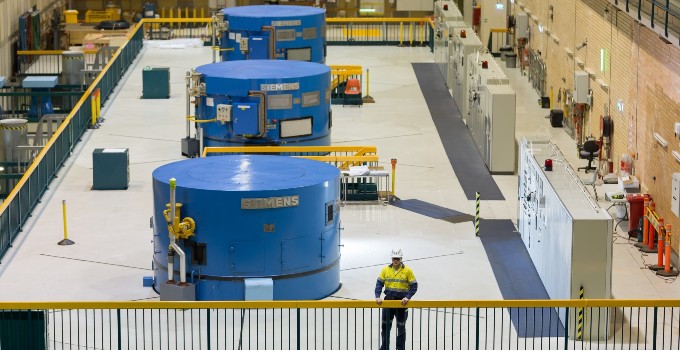
The alternating current (AC) transmission age started in 1891 through collaboration and perseverance. This transmission method has transformed the world, led us to the brink (or over the brink) of a climate disaster, and provides the backbone for a future founded on abundant renewable resources (in Australia, at least). Collaboration and perseverance are now required to ensure the continued utility of the grid.
Synchronous machines have always been the driving force in the grid. These elegantly simple electrical machines sit in powerhouses around the globe using their century-old technology (nearly 150 years, in fact) to convert mechanical energy into electrical energy to power the computer that I’m using to type this.
There’s a romance to these machines. It’s more than nostalgia. They spin, as the name suggests, in synchronism. If one of them falters, all the rest pick up the slack. The only connection they need is the power lines. This robustness is central to the way our electricity grids have operated for over 130 years – but the influence of synchronous machines is slowly being eroded.
The most obvious erosion of the influence of synchronous machines is their displacement by inverter-based renewable (IBR) technologies as solar, wind and battery energy storage (BESS) installations proliferate. A less obvious erosion of their influence is the diminishing understanding and appreciation of synchronous technology within the industry. This lack of understanding by engineers, planners and regulators of the fundamental building blocks of the electricity grid is starting to show.
This might sound like the curmudgeonly ranting of yesterday’s engineer as technology passes them by. Maybe it is … but, rather than dwell on negatives, let’s look at what synchronous machines bring to the power system.
- System strength
The fundamental difference between synchronous machines and IBR is thermal inertia. Typical synchronous machine design can sustain high levels of over-current for a relatively long time (seconds) compared to IBR units (milliseconds). This difference allows synchronous machines to provide a strong ‘natural’ response to voltage variations in the power system without threat of overload and damage. Transmission protection systems – and therefore grid security and safety – rely on this characteristic.
There are alternatives. Overload capacity can be built into inverters, but this is expensive. Dedicated inverter-based devices such as static synchronous compensators (STATCOMs) can be used to provide fault response.
- Inertia
Synchronous machines spin. Their spinning bits (rotors) have mass, so they have mechanical inertia. This mechanical inertia doesn’t require a control system to provide an inertial response. The inertial response from a synchronous machine is a known, predictable quantity, regardless of voltage.
IBRs can provide synthetic inertia and, when voltage is healthy, can out-perform synchronous units. When voltage is not nominal, the same current limitations that affect the IBRs’ ability to deliver fault level can also restrict the effectiveness of synthetic inertia delivery.
- Robustness
The previous two characteristics – system strength and inertia – show the support that synchronous machines can provide to the power system during disturbances. The synchronous machine can deliver these supports across a wide range of power system disturbances to voltage and frequency.
IBRs typically rely on fast controls to manage their response to system disturbances. Under some extreme conditions these controls may not be fast enough or well enough tuned to manage. While tuning is important to synchronous machine performance, often it has a second-order effect or adds robustness over and above the natural response.
Displaced but not superseded
Understanding the inherent dynamics of synchronous machines gives power system engineers a better appreciation of these machines’ contribution to power system stability. Regulators should be mindful of the reduced risk (and mostly advantages) to system security that synchronous machines offer relative to IBRs. This is despite the uncontrollable nature of synchronous machines. That is, physics dictates the stabilising effects from synchronous machines whereas control algorithms determine whether an IBR can stabilise or destabilise. Controller model accuracy is therefore more important for IBRs than it is for synchronous machines where transient stability or electro-mechanical transient time frames are considered.
Better understanding of synchronous machines should lead to more appropriate rules relating to dynamic response to system events. Overly specific requirements for fault ride-through, power recovery post-fault, and maintenance of real and reactive power during voltage disturbances may all lead to needless protracted negotiations over access standards. This slows down the progress of the energy transition, frustrates otherwise helpful development, and diverts resources towards trivial considerations rather than focusing on issues of greater importance.
Synchronous machines will play a role in the energy grid of the future. Our industry needs to maintain expertise and regulatory frameworks that allow this technology to continue providing the grid with vital stabilisation and robustness.
ABOUT THE AUTHOR
Donald has over 20 years’ experience providing advice on regulatory and technical requirements for generators, substations and transmission systems. He has worked for all areas of the electrical industry, including generators, equipment suppliers, customers, NSPs and market operators. Donald specialises in the performance of power systems. His experience in generating units, governors and excitation systems provides a helpful perspective on how the physical electrical network behaves.
NEM connections, complexity, risk and tolerance: achieving a balanced approach to grid connection
With the current bow wave in publicly announced emerging and committed storage, wind and solar farms in Australia’s National Electricity Market (NEM), it is now more important than ever that your connection application processes are rigorous and efficient.
This article charts a path of least resistance within the framework of the Australian Energy Market Operator (AEMO) for connection, while also pointing out more effective approaches you could consider. The path of least resistance requires more upfront commitment of resources to ensure the application eliminates doubt or uncertainty. Other approaches take a more balanced approach to risk, accuracy and allocation of effort across the project development timeline.
Maintaining flexibility of deliverables – It’s not all about being technical
Plant dynamic and steady state parameters are likely to change and assessment requirements will evolve from the start to the end of your connection application. This is a natural process of optimising plant performance and compliance under various system scenarios, but comes at the potential cost of disordered delivery of the connection application and delays to the project. Streamlining and clear version control of the report will allow all stakeholders to easily trace changes. Furthermore, with significant updates to PSSe and PSCAD modelling requirements, robust automation of re-assessments would minimise processing time but the changing assessment requirements make investing in such automation somewhat fraught.
Finding a balance between fundamental principles, good practice and efficiency
AEMO has gone to great lengths to increase the certainty and magnitude of expectations about power plant modelling and performance standard assessment. There are paths of least resistance and good practice that can help facilitate a connection application within this framework (which we’ve outlined in the left-hand side of the table below). There are also some fundamental concepts that could help to eliminate wasted effort in the connection application process (the right-hand side below). Achieving a balanced approach is key to an effective and efficient solution not just for an individual project but for the industry as a whole.
| Don’t be scared of EMT modelling | |
| Whilst RMS (root mean square) assessments are still crucial, network service providers and AEMO are requesting significant effort in EMT (electromagnetic transient) benchmarking and analysis of wind and solar farms. Hence, it’s best to benchmark respective EMT and RMS models (using software such as PSCAD and PSS/e) at early stages of the project to identify inaccuracies. Particular focus should be given to plant responses to network and PoC (point of connection) faults with varying grid strength to ensure ride-through requirements (S5.2.5.5) are met and that active power, reactive power and voltage responses are within tolerable ranges between RMS and EMT models. |
The industry (proponents and regulators) must consider which aspects of these models need to be accurate for the development of performance standards and the determination of grid compatibility. When the overall goal is a stable connection of plant, pragmatic engineering judgment is often more beneficial than a slavish pursuit of absolute precision. We should focus more closely on fundamental issues relating to control stability, such as loop gains and time delays, than on the accuracy of switching controller triggers and sensing. |
| Understand your connection point and surrounding network | |
|
We have previously discussed the issues of congestion and system strength and how they impact grid connection. These issues can result in plant MW constraints and non-compliant fault ride-through. It is also important to remember that system strength does not equal SCR (short circuit ratio). System strength is a combination of high impedance network, high concentration of asynchronous machines and lack of nearby synchronous generation. It is a location-specific artefact that adds to the importance of assessing your plant’s control (S52.5.13) and contribution to faults (S5.2.5.5) in network models. |
The strength or otherwise of the connection point must also be taken into account when considering whether the performance standards are reasonable. Issues such as fault current injection rates, rise and settling times, voltage regulation ranges and the like depend heavily on the surrounding network and often on other nearby generating units.
|
| Ride-through is not enough on its own | |
| Gone are the days of plant only being required to ride through PoC voltage dips for various periods of time. Recent versions of the National Electricity Rules require rigorous reactive current injection assessment including amount and rate of injection for varying voltage profiles, and for balanced or unbalanced faults. Hence, work is needed to tune the plant and inverter-based controls to meet these requirements (predominantly in clause S5.2.5.5) and maintain post-fault voltages within network tolerances (commonly 0.9-1.1pu). | These more technical requirements of the rules take an inordinate amount of work to achieve compliance with a particular performance standard across the range of operation and system events to which the plant will be exposed. A more standard test could be considered to benchmark the performance of the plant against a small and finite range of events. |
At Entura, we bring as much judgement and experience to the work of connection applications as we can. The process does not always reward this approach, but we maintain that understanding the intent of analysis, as well as the need and importance of it, allows us to target and emphasise some analyses over others – and this helps to manage the connection risks for our clients with a high level of efficiency.
If you’d like to discuss how we can assist you with your grid connection projects, please contact Donald Vaughan on +61 427 721 558 or Wayne Tucker.
About the author
Donald Vaughan is Entura’s Technical Director, Power. He has more than 25 years of experience providing advice on regulatory and technical requirements for generators, substations and transmission systems. He has worked for all areas of the electrical industry, including generators, equipment suppliers, customers, NSPs and market operators. Donald specialises in the performance of power systems. His experience in generating units, governors and excitation systems provides a helpful perspective on how the physical electrical network behaves.
Engineering – by humans, for humans
When engineers think about the future, do we get so engrossed in the complex technical problems that we don’t attend enough to the human angle?
Engineers have a reputation, whether rightly or wrongly, for being poor communicators, working obsessively and in isolation, and focusing on the immediate goal rather than its impacts on communities. Often, clichés have a basis in truth. If we are going to shift perceptions, we need to start by thinking about the way we work and the leadership we show to the next generation of engineers.
There’s no way we can predict the major developments, challenges or solutions of the next five or six generations of engineering careers. What we should focus on is what we can do right now to lead change in our profession and our communities – and I think the keys are communication, collaboration and community.
Communication
I recently listened to a podcast in which two energy market experts talked with a power system engineer. They discussed all sorts of technical matters relating to frequency and voltage control. I love those topics, but this conversation was limited and uninspiring because the participants simply didn’t have a common language or understanding.
We need to learn to communicate in ways that a variety of people can understand. That will mean better conversations with the people who can help our work have greater impact, and it will help our communities to appreciate the importance of our work in their lives.
It’s too easy for us as a profession to sit at our desks or stand under our hard hats and luxuriate in how clever we are, and then bemoan how so many people have no idea what we do and don’t value our work.
When things that involve engineers go wrong, a flurry of opinions erupts. Failures such as the blackout in South Australia, or the cladding issues at the Grenfell Towers, or issues with airlines or bridges or dams all lead to our communities questioning and debating engineering practice. Engineers tend to try to stay out of this rough and tumble for fear of being misrepresented. Yet maybe it’s better that we do engage where we can, since being misrepresented on a small issue is better than allowing a groundswell of misguided public opinion due to a lack of understanding of engineering principles.
We need to try to better explain our work and find simple ways to convey the complexities of the decisions that we make.
Collaboration
The world is far more complex now than it was a century ago – but it is impossible to imagine what level and pace of change future generations will experience. If we want to transform our world or help build a better future, we can’t do it by ourselves.
Engineering no longer operates in isolation, if it ever did. We must collaborate across the engineering team and across other professional disciplines to achieve truly effective development for our communities. Sometimes we may need to focus a little less on technical delivery as a primary outcome, and increase our recognition of the value gained by engaging successfully with the communities on whom the project relies for success.
Collaboration makes our work more effective, and exposes us to a wider range of inputs and values that we can incorporate into our designs and processes. Engineering can be a leader but it can also be a facilitator for better outcomes when we draw on, listen to and learn from the other experts involved in other aspects of our projects.
Community
Engineering work almost always benefits more people than merely the one who pays the bill. Much of my work is in connecting wind farms and solar farms to the grid. Mostly my work is paid for by the owner of the farm, and while it delivers direct benefits to the owner through return on investment, it also affects everyone connected to the nearby network. It affects the network service provider and market operator, it pays salaries, and it supplies the clean energy that helps the country reduce emissions and meet its international targets. In other words, my work, which may seem intangible, has tangible effects in the real world.
If we agree that our labours produce real impacts, we need to take better care to fully consider the wider consequences of our work, which often has the potential to cause ‘collateral damage’. We can’t build a road or a wind farm without changing the landscape. When we build a machine, it uses energy and may emit pollutants; and it reduces reliance on manual labour, which may put someone out of a job. There may be a risk to lives, livelihoods or the environment if something goes wrong.
Do we always make decisions about these matters with the community front of mind, or do we place our clients on the higher pedestal? This is a tricky area and I’m not espousing a puritanical approach. However, if we knew in 1919 what we know now about lead poisoning, acid rain, greenhouse gases, scarcity and general sustainability principles, what different choices could have been made?
In a time of automation, we need to think about benefits and risks and how they affect our communities. On one occasion early in my career, I designed a controller to turn on and off a couple of compressors at a power station. I wrote some code to balance the run hours. A few months after the new system was commissioned, I asked one of the operators how the system was going, in terms of the run hours management, and he said ‘you’ve done me out of a job’. I hope he was joking. The task he’d been doing wasn’t particularly important, but there was value in having a person who was in tune with the equipment to take care of it, and there was also value in giving that person dignity through work.
My point is that we must keep our communities foremost in our minds as we go about our work. It’s not just about what we produce. It is the way we work and the people we choose to work with and for. Our influence on the development of the next generation of engineers perhaps has more impact on communities than our actual work outputs.
Through communication, collaboration and community, engineering can be both ‘more human’ and ‘for humans’.
About the author
Donald Vaughan is Entura’s Technical Director, Power. He has more than 25 years of experience providing advice on regulatory and technical requirements for generators, substations and transmission systems. Donald specialises in the performance of power systems. His experience with generating units, governors and excitation systems provides a helpful perspective on how the physical electrical network behaves and how it can support the transition to a high renewables environment.
MORE THOUGHT LEADERSHIP ARTICLES
Can the power grid weather the weather?
Even a single day of load shedding makes people doubt the national grid’s robustness. How will the grid cope if we experience extreme weather conditions more often?
Things get hot in Australia. They can get smoky, or wet, or cold. Australia’s beauty is in its ruggedness, its unpredictability and its diversity of natural environments. It’s what Dorothea Mackellar captured so well in the famous Australian poem ‘My Country’ – a ‘sunburnt’ land of ‘flood and fire and famine’, with ‘droughts and flooding rains’.
As dramatic weather patterns become more intense and more frequent, the electricity grid must be robust, or at least be managed to adapt to short-term challenges.
If we get the design standards right and if conditions fall within the expected extremes contemplated by the framers of the standard, then everything works. However, what happens when conditions are abnormal? In heatwaves, we see people hosing the rail network to stop expansion. We’ve seen hosing to cool distribution power transformers at peak times too. But there’s only so much water and so many hoses that we can deploy when the heat is on. It’s not a sustainable solution.
Can we manage?
Yes … but we must manage actively. Business as usual will not be enough. Consumers will not tolerate lower levels of reliability based on the weather. So something has to change.
There are a few mutually supporting paths we could take, including (1) considering extreme temperature ratings and improving the reach and spread of weather monitoring and weather-dependent grid management; (2) adjusting standards to contemplate higher temperatures; and (3) reducing our reliance on high flows to deliver peak demand.
1. Consider extreme temperature ratings
Incentives already exist for our network service providers (NSPs) to release hidden capacity in networks. The incentives remain a small percentage of the overall regulated income they receive. The contemplation and control of realistic ratings under unusual weather conditions could be made more attractive to our NSPs. The NSPs would then be more likely to make these opportunities for capacity benefits transparent to the regulator and the public.
Generators are now being required to stipulate capacity at higher temperatures, but this is not being applied universally across existing plant. As we saw in Victoria this summer, the market is very reactive to the unplanned withdrawal of power from large thermal units – as much, if not more, than it is to variations in wind and solar power. Thermal machines have shown themselves to be sensitive and not always robust in prolonged hot spells.
2. Change the standards
If maximum temperatures continue to climb, our standards or ratings may need to be adjusted to suit. In a global market, we have to be careful about being too ‘special’ or we’ll end up paying for specifications that cost more than the benefits they deliver. A half-way position may be for generators to estimate their capacity in relation to temperature conditions and require tuning of these estimates over time. This would at least give us an idea of the temperature effects on production across the fleet. The results of this might then inform the need for changes to standards or at least build quality to relieve unmanageable reductions.
3. Reduce reliance on high flows
We’ve seen the effect that emergency events such as storms and fire have on the grid. Storms are managed through localised declarations of special constraint sets. They’re also generally short-lived. As we saw with the Tasmanian bushfires this summer, smoke and fire can affect a transmission corridor for weeks at a time. Because intense storms and fires tend to be rare, the market can take some time to adapt. Some planning or scenario work by AEMO might help prepare the market and reduce the impact on supply.
Reducing our reliance on high flows to regulate price or maintain supply may also be valuable. This suggests a need for storage/s at opposite ends of tie lines and interconnectors so that short periods of constrained flow can be compensated partially or fully by the far-end storage.
We may also need some flow-path diversity on critical corridors or on corridors that link dispatchable generation sources with loads.
There’s little doubt that Australia will experience more frequent and intense floods, fires and heatwaves. In our ‘sunburnt country’ we need to keep our eyes firmly on the future of our climate, and we must build resilience into our generators, grid and market systems.
If you would like to find out more about how Entura can help you navigate your challenges in the electricity market, please contact Donald Vaughan on +61 3 6245 4279.
About the author
Donald Vaughan is Entura’s Technical Director, Power. He has more than 25 years of experience providing advice on regulatory and technical requirements for generators, substations and transmission systems. Donald specialises in the performance of power systems. His experience with generating units, governors and excitation systems provides a helpful perspective on how the physical electrical network behaves and how it can support the transition to a high renewables environment.
MORE THOUGHT LEADERSHIP ARTICLES
Limber up for a more flexible electricity grid and market
Integrating renewables into grids and markets is a hot topic worldwide, with many challenges and approaches to explore.
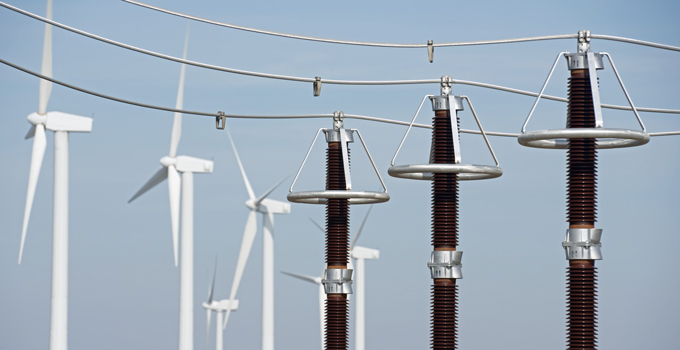
In late June 2018, a series of meetings run by the International Energy Agency (IEA) in Yokohama, Japan, brought together a wide range of electricity industry regulators and participants to discuss the IEA’s current work in this arena. There was a lot of ground to cover. I shared the Tasmanian experience of managing frequency using inertia and governor tuning.
For me, three main takeaways from the discussions are that we need to improve Australia’s market arrangements, increase flexibility, and we should try to re-imagine the grid as an interaction.
Improving Australia’s market arrangements
Anyone who’s been watching the Australian electricity sector over the last few years will recognise that there’s room for improvement in our market arrangements.
The National Electricity Objective (NEO) aims to promote the long-term interests of electricity consumers through efficient investment in, and operation of, electricity services. These consumer interests include the price, quality, safety, reliability and security of supply of electricity. It also means ensuring the reliability, safety and security of the national electricity system. However, commercial and environmental drivers are beginning to affect the security of electricity, and in some instances affecting the price as well.
It’s hard to see why we’ve ended up where we are. What’s important is what we do next, and why.
Understanding and pursuing flexibility
All sources of generating plant have flexible and inflexible attributes. We have always worked around the limitations and taken advantage of the benefits. Now, with disruption, prosumers, micro-grids and all the other ‘scary’ status-quo-busters, we have much more freedom to achieve flexibility than we have had in the past. That is, generators, grids and customers can all provide flexibility and add to the overall value of the electricity market.
Designing new plant, retrofitting old plant and improving controls to increase flexibility must all form part of planning and regulation as we continue to decarbonise electricity production.
Imagining the grid as interaction, not assimilation
The philosophy of grid revolution to date has been assimilation. That is, where possible, new generators need to look and feel like traditional generators.
As system security margins decrease, this is becoming even more the case. It sets up a sometimes false dichotomy in terms of market share, political ideology, technical requirements and standards, and assessment of value. And this is unhelpful as we move towards an electricity sector with increasing proportions of renewables. One reason why Australia may have ended up where we are now may be that the NEO is silent on environmental impact.
When we think of the grid and the market as spaces for interaction rather than assimilation, these dichotomies break down and we’re more likely to achieve fruitful outcomes. Interactions are not just technical (electrons and Ohm’s law) or commercial (tariffs and hedges) but also human.
The electricity transformation will be able to occur faster and more successfully when the electricity industry embraces the power of the demand side, interacts in a more beneficial way with human-scale usage patterns and requirements, and thinks about the flexibility that exists or is required in demand, storage and production.
Finding a new approach
This all sounds marvellous, doesn’t it? It is the sort of regulatory utopia that could only come from a group of government officials sitting around a table a long way from home. But for me, it was refreshing. The thought that the market serves a higher ideal can only inspire. Certainly, the developing countries that presented at the meetings are firmly motivated by the immediate benefits and opportunities that reliable access to electricity will provide to their people.
In some ways Australia, too, is a developing country in the electricity sector. In the status quo, the path to future sustainability is blocked by the threats of climate change and, in some respects, by resource scarcity (depending on your view of the horizon). We need to develop a new approach to electricity production and consumption just as developing countries do.
If we think of the market as a facilitator for humans to flourish, then we must be careful to design markets for this purpose. Is the Australian market hampered in this respect by the dominance of a limited number of large players? Is there sufficient direct participation of individuals in the market? Does the regulatory framework accurately and adequately reflect the needs of all market players? Does the market inherently promote and reward flexibility?
Market power, democracy and flexibility
My feeling is that there’s work to do across each of these areas.
A former Australian trade minister once remarked that Australia would always be somewhat of an oligopoly. We will never have large-enough markets that won’t be dominated by a few players. In some sectors we’ve enshrined protections that almost guarantee it. The current market design has led the electricity sector down this path.
This is okay so long as the behaviour of these players remains able to be influenced by their customers through choice of provider and volume, but this isn’t always the case.
Allowing more players to provide greater diversity of energy and grid services will help to erode the power of the oligopoly and will also increase the flexibility of the grid and the market. Various system incidents in South Australia and the Northern Territory have highlighted the need for flexibility. If we understand flexibility properly, we will understand a way to meet the need for it.
Greater flexibility can mean different usage patterns, different contributions from a wider number of players and more give and take between the grid and the various generating technologies. Providing rewards for flexibility will encourage diverse contributions, slow the retirement of existing plant, and bring new players into the mix.
Markets, grids and power plants must be planned and will need to allow for greater flexibility to provide better outcomes for customers. It’s time for the electricity sector, its regulators and its customers to limber up.
If you would like to find out more about how Entura can help you navigate your challenges in the electricity market, please contact Donald Vaughan on +61 3 6245 4279.
This article was first published in RenewEconomy.
About the author
Donald Vaughan is Entura’s Technical Director, Power. He has more than 25 years of experience providing advice on regulatory and technical requirements for generators, substations and transmission systems. Donald specialises in the performance of power systems. His experience with generating units, governors and excitation systems provides a helpful perspective on how the physical electrical network behaves and how it can support the transition to a high renewables environment.
MORE THOUGHT LEADERSHIP ARTICLES
Congestion and losses: more than a blocked nose for new renewable generation
Anyone who’s ever had a cold understands the discomfort of blocked airways. Congestion challenges, albeit slightly different ones, also face developers of new renewable energy generation.
The nature of powerflows around the grid is changing rapidly with a lot of new generation being built on the edges or middle of the transmission system. This is increasingly being recognised as a problem, but quantifying the impact can be tricky.
Developers are asking: “What other generation will or can be built in the area? Will there or can there be collocated storage? When may these things be built? Will other projects in the area have a similar generation pattern to my plant?” And these questions are becoming harder to answer with the wave of renewables development.
Answering these questions
There’s no real substitute for analysis and an understanding of the degree of certainty required.
A simple example of adding generation in north-east New South Wales illustrates the point. Naturally, developers think first about competition: “Will added generation displace existing generation in NSW or generation on the interconnector? What is the most conservative assumption? What is the balance of probabilities?”
Even this simple example leads to many assumptions and choices, so proponents and owners need to understand how certain they need to be – and therefore how thorough the investigation of congestion needs to be.
What other questions are there?
Traditionally, congestion has been considered a problem of network thermal capacity. The nature of renewable energy generation adds other factors into this mix, such as: “Will fault levels remain high enough to support short-circuit ratios? Will critical clearance times be maintained to allow the full thermal capacity to be used? Will imbalance of generation development on parallel paths reduce pre-contingency loading limits?”
These sorts of questions require complex analysis, adding further uncertainty and additional dimensions to the results.
There’s talk of additional network provision being required to support changes to the flows in the transmission system. Such changes will no doubt be helpful, but questions of when, how much and who pays must be asked.
We can see that calculation of congestion has real impact on expected revenues – but with so little certainty, it is hard to determine how critical any impacts may be on the overall business case.
What about losses?
The other effect of large generation on transmission flows is greater network losses. The marginal loss factor (MLF) regime that accounts for losses in the National Electricity Market (NEM) relies on many of the assumptions of congestion analysis, with similar levels of uncertainty of the input increasing the uncertainty of the output.
MLF has always appeared punitive for new renewable generation distant from the load centre, since long transmission distances (often over low-capacity lines) lead to inefficient power delivery.
The MLF regime is supposed to incentivise development of efficient and timely generation and demand. The drivers for renewable generation are less about actual demand and more about displacement, so the MLF inhibits the building of new generation in favour of the status quo. A simplistic analysis, however, shows that, on average, new renewables see slightly higher MLFs than the established generation and new thermal assets.
There could be a number of explanations for this but it shows that the density of generation has remained low enough thus far. Increased build and in-fill will ultimately lead to MLFs becoming a bigger and bigger factor for new and existing plant.
Other congestion issues
There’s another form of congestion looming or already starting to impede the rapid deployment of solar and wind technology: a lack of capacity of network service providers (NSPs) and other regulators to deal with the influx of applications for new connections.
Add to this the increasingly technical analysis required to demonstrate compliance of these connections with the rules and a real bottleneck is created.
Blow your nose
The truth is, the only answer to any congestion issue is to remove the blockage .
In terms of network congestion, in the short-term, we need to continue to think about the likely requirement for renewable developments (with storage) to meet the challenges of the energy trilemma – replacing coal-fired generation following retirements with reliable, affordable and more sustainable generation.
And we will need to better understand the value of transmission re-enforcement to support a changing generation fleet.
It may also force a return to the Hub or Scale Efficient Network Extension (SENE) type of thinking that gives a clear signal to proponents to ‘build here’, as we can now see in New South Wales.
Network re-enforcement may also improve MLFs, slightly. However, if MLFs are low across the board in a region, the pool price will adjust to reflect this over time. In the short term, local or regional storage may be cost-effective in raising MLFs to investment-tolerable levels.
In terms of resource issues, training and applying more skilled resources to this sector must be a focus for NSPs and regulators.
Our approach as consultants is to not always recommend more analysis but, alternatively, the right and the most efficient form of analysis.
The challenge for NSPs and regulators is to act more commercially and embrace an engineering approach to analysis, tolerating some uncertainty – just as proponents do.
We always feel better once the fog of congestion lifts. Sometimes we try to fight through it, but it’s often better to take deliberate action to treat it and to avoid complications, just as when you are suffering the symptoms of a cold.
If you would like to find out more about how Entura can help you navigate network challenges, please contact Donald Vaughan on +61 3 6245 4279.
About the author
Donald Vaughan is Entura’s Technical Director, Power. He has more than 25 years of experience providing advice on regulatory and technical requirements for generators, substations and transmission systems. Donald specialises in the performance of power systems. His experience with generating units, governors and excitation systems provides a helpful perspective on how the physical electrical network behaves and how it can support the transition to a high renewables environment.
MORE THOUGHT LEADERSHIP ARTICLES
Tackling renewable energy integration: five lessons from Sri Lanka
Ambitious renewables targets, movements away from thermal generation, increasing demand for electricity … it’s boom time for renewables around the world. Yet the global energy transformation brings some challenges, particularly for network stability and security.
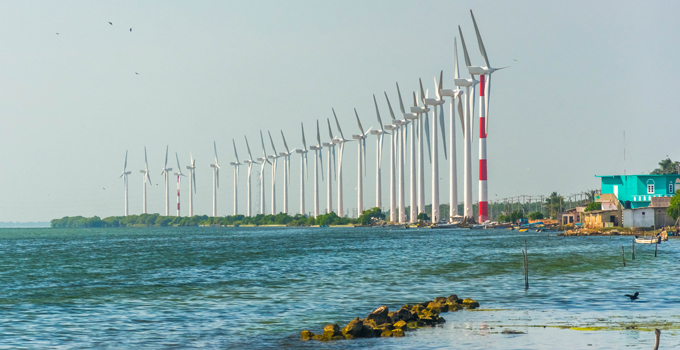
Sri Lanka offers an interesting case study in the complexities of quickly integrating a large proportion of renewables and how some of the hurdles may be overcome. The lessons we can learn from the Sri Lankan experience are applicable worldwide.
In 2016 the government of Sri Lanka set a very ambitious renewable penetration target, with 100% of power generation to come from renewable sources by 2050. Coal and oil generation, currently accounting for around 50% of all generation, will cease by 2045. If this isn’t challenge enough, add in the projection of maximum demand rising above 7000 MW (from a current daily maximum of 2500 MW) by 2040.
Between September 2015 and March 2016, three nation-wide blackouts threatened to significantly undermine Sri Lankan industry and foreign investment prospects. The challenge for the Ceylon Electricity Board (CEB, which runs Sri Lanka’s power system) now is to achieve the country’s power transformation while still ensuring network security and reliable electricity. Any future unexpected system outage would be likely to erode public confidence in renewable development, regardless of whether the outage relates to renewables or not.
What can we learn from the Sri Lankan experience of the 2015/16 blackouts and Sri Lanka’s current challenges in its journey to a renewable energy future?
1 – Focus on accurate modelling of the power system
The first lesson to be taken from the 2015/16 blackouts is the need to focus on power system modelling. The first blackout occurred after a trip of the largest generating plant under light load. The next was due to a trip of a major transmission line when two parallel circuits were taken offline for maintenance. Neither of these events were envisaged through system model simulations. If a utility’s simulation tools won’t predict such events, planning engineers will struggle to anticipate or guarantee system security under system contingencies.
For system planning and operations, CEB has developed a power system model consisting of major hydropower, oil, coal and wind plants. However, no model accuracy requirements are specified in the national grid code, which leads to the use of generic models with unknown modelling accuracy. Prior to Sri Lanka’s 2015 blackouts, limited tests were conducted to tune the models to accurately represent behaviour. During 2017, CEB embarked on a project to test the model validation for at least some of the major hydro units. These tests need to extend to all major power plants so that engineers can trust the actual performance of every major generator in the system.
2 – Determine a clear, single responsibility for the system model
The second lesson from Sri Lanka’s system modelling is the need for a single owner of the system model files, with responsibility to maintain the model and ensure its accuracy. If different departments of a utility have different system models, results of an event analysis may vary.
Ideally, the entire power system should be modelled accurately and the model controlled by a single team. This is vital for maintaining integrity of the system studies conducted by various parties.
3 – Consider minimum generation
When making decisions about the size of power plants, it is quite common for the focus to be on maximum generation. However, to minimise any unwanted constraints, it is really important to consider the lowest level of generation at which the plant can operate.
Three coal plants in Sri Lanka each have capacity of 300 MW with minimum generation of 180 MW. During periods of low demand, all three coal plants need to remain at their minimum of 540 MW (3 x 180 MW) even if other generation is available in the system.
4 – Ensure the network code looks to the future
When determining the grid code, it is essential to keep an eye on the development of non-conventional renewables. The grid code needs to be able to manage power quality issues in the future while minimising unnecessary costs to developers. In other words, it must have enough regulatory power to impose required technical targets, yet be flexible enough to minimise unnecessary mandatory capital expenses.
5 – Set up an ancillary service market
Sri Lanka does not currently have an ancillary service market, so the fall-back position is mandatory interruption to the system load under certain contingencies. This will not be acceptable in the longer term and customers will demand higher reliability. A way of categorising system support, especially frequency control ancillary services, will enable CEB to maintain system reliability as well as understand the quantities and price to deliver the required reliability.
Some tightening of Sri Lanka’s current technical and connection policies and practices will be needed as the country embarks on drastic change in its generation mix in pursuit of its renewables target. Yet the lessons we’ve explored in this article are readily applicable to any network keen to accelerate substantial integration of renewables, especially solar PV and wind, for a successful energy transformation and a future of reliable and sustainable power.
If you would like to find out more about how Entura can help you overcome network challenges when integrating renewables, please contact Ranjith Perera on +61 3 6245 4272, Shekhar Prince on +61 412 402 110 or Patrick Pease.
About the author
Ranjith Perera is a Specialist Power Systems Engineer at Entura. He has over 22 years of experience in Australia and South-East Asia, working on customer and generation connections and broader power system analysis. Ranjith has provided power system advice on a wide range of network augmentations, network planning and system stability in Australia and internationally. These studies included option analysis in transmission planning, constraint analysis, determination of reactive support (dynamic or static) in system stability / TOV and detail load modelling in voltage stability. Ranjith also developed voltage recovery guidelines to TNSP based on regulatory requirement and customer equipment tolerances.
MORE THOUGHT LEADERSHIP ARTICLES
Do you have the right SCADA strategy for your business?
Installing a SCADA system is a major outlay. With the ever-increasing pace of technological change, how can you ensure your new system or upgrade will repay your investment and deliver maximum benefits?
It’s almost impossible to imagine running a business in the power or water sector without SCADA and automation. The significance of the benefits of visibility and automation of plant and processes, particularly for remote assets, is unquestionable. However, to get the best return on your investment, your system needs to be functioning at its best.
Loss of SCADA means loss of visibility, production, time and money, but basic functionality is not enough. If your SCADA system is functional but not optimal, it is still opening you to risk . You could be missing out on valuable opportunities to increase your business efficiency, make smarter decisions and continuously improve your processes to achieve less downtime and more effective maintenance.
This means that any new system needs to be reliable, up to date, and future proofed – able to be effectively expanded and updated to accommodate developments in technology and changes in your business. And, for an older system, it means that you need to assess whether your system is still meeting your requirements or if it could be upgraded to do more for your business and protect you against risks. If an older system is still reliable and robust, you may not need to retire it or make wholesale changes.
Choosing a new system or approaching an upgrade
The first step is to explore and understand your options in the context of your business strategy. The right system isn’t necessarily going to be the one that is the latest trend or has the most bells and whistles – it will be the one that is best suited to the particulars of your business and your business goals.
Consider these questions:
- What are your short-term and long-term business objectives? Is the system you are considering consistent with these objectives?
- What can the available technology or systems do for your business today? For example, how will the technology or system eliminate or reduce current inefficiencies and costs?
- What is the potential of emerging technology to meet your future needs? For example, what smart functionality might really help your business over the long haul? Could improvements in modern SCADA systems be able to automate more tasks, integrate with other systems, or streamline reporting?
Before you acquire a SCADA system, fully explore the benefits of a comprehensive strategy to manage the system over its lifecycle, taking into account the lifecycle costs, benefits, risks and opportunities. Your strategy should also facilitate reliable systems that do not compromise anyone’s safety or wellbeing, that minimise impacts on plant or the environment, and that optimise the value obtained from the system.
As you proceed with the project, you’ll need to consider who will develop your functional requirements and standards for the SCADA system. Don’t buy a specification that was developed for use by other entities. Your requirements and expectations must be documented, and the system needs to meet them. Requirements should support the strategic objectives of your business, addressing key topics such as security, availability, performance and disaster recovery.
Start visualising your planned system through a high-level network diagram detailing interfaces to other business systems, operator stations and to other external links. Then carry out a preliminary gap analysis to identify disconnects between existing and future requirements. This will help you focus your efforts and make informed decisions.
When it comes to deciding on the system, consider procuring ‘off the shelf’ applications and minimising customisation and software development where practical. This may offer savings in the long term when upgrading is required, as some customised functionality may become incompatible with new versions.
Once you’ve selected a vendor or system integrator, consider whether you have the required skills and experience to evaluate their performance and to determine whether the system is being designed and implemented such that it will meet your requirements, standards and expectations. If not, involve someone who can oversee the project technically as ‘owner’s engineer’. Engaging someone skilled in design, implementation and testing will reduce your technical, operational and financial risks.
Planning to retain but improve your existing SCADA system?
It’s likely that there’s still a lot of value in your old SCADA system. To get the most out of your prior investment, try to identify which parts of the system still have worth or could be translated into a new system, and which parts need to be augmented or replaced.
Unreliable, unsupported, obsolete equipment and software should be the first to go; proprietary hardware or software should also be considered for replacement to allow for open connectivity, which will offer you a more flexible system architecture and greater software functionality.
From your old SCADA system, you may be able to retain your SCADA system point database through capturing and documenting it. You might be able to transfer or convert your historical data into the new system. Or you could consider developing your SCADA screens with a level of familiarity to your previous screens. But regardless of what you retain, you’ll require improvements that allow seamless changeover of your operations.
Other important considerations when you’re planning to improve an existing system are cyber security, redundancy, situational awareness and alarm rationalisation.
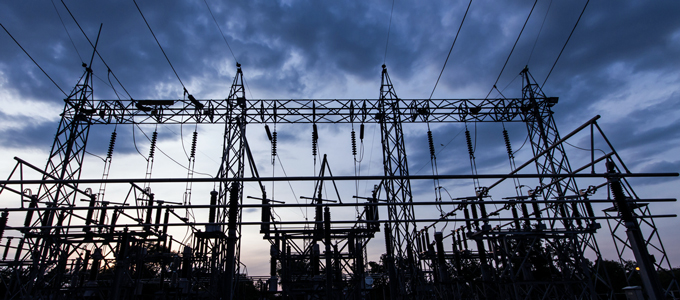
SCADA systems are too important and too great an investment to risk making the wrong choice . You need to be confident that your investment in SCADA will deliver the greatest level of benefit and reliability over the longest time. The best way to ensure a good decision is by putting in the groundwork to really know what’s available and what’s best for your business. Getting it right will free you up to reap the rewards of greater productivity and profitability.
If you would like to find out more about investing in a new or improved SCADA system, Patrick Pease or Shekhar Prince on +61 412 402 110.
This is the first article in a series on SCADA. In subsequent articles we will explore SCADA replacement and upgrade in more detail, investigate what you need to include in your SCADA system to improve operator safety and increase business efficiencies, and consider the financial case for a SCADA system implementation. Follow us on Facebook, Twitter or LinkedIn for future updates.
MORE THOUGHT LEADERSHIP ARTICLES
Batteries vs pumped hydro – a place for both?
Two very different storage technologies – one old, one new; one that takes years to build, one that can be built ‘within 100 days (or it’s free)’. How else do they differ, and is there a place for both?
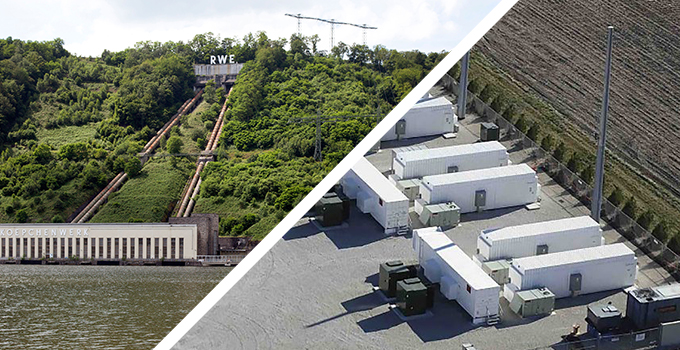
The rapid growth of renewable energy generation has been driven by two concurrent factors: the falling levelised cost of the energy produced by wind and solar, and the retirement of a number of coal-fired power stations. The recently released Finkel Review notes that by 2035, approximately 68 per cent of the current fleet of Australian coal generating plants will have reached 50 years of age.
The Clean Energy Target proposed by Dr Finkel is not yet confirmed but it recommends incentives for technologies with low or zero carbon emissions. More renewable energy generation brings new challenges in an increasingly complex grid. Dr Finkel therefore also proposes that energy storage be mandated for solar and wind farms.
Renewables can’t, on their own, meet the fluctuations in demand that occur throughout the day without some regulation as to when power reaches the grid. Power needs to be dispatchable. Dispatchable means that energy can be provided upon request. If the sun is not shining or the wind is not blowing, renewable energy cannot be dispatched unless it has been stored in some way.
There are a number of different types of storage but the two being discussed most widely right now are batteries and pumped hydro energy storage. These two technologies are very different and there are some limitations involved in comparing a well-known and established technology with one that is new and developing rapidly.
How do they support the network?
Pumped hydro is based on well-established synchronous generation, providing critical ancillary services to the grid, through the provision of inertia, frequency and voltage support and sufficient fault level support.
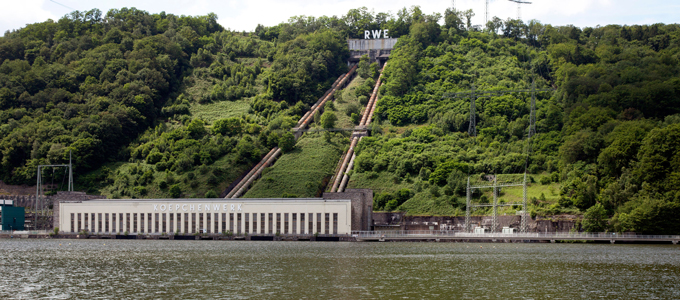
Battery inverter technologies are still catching up on most of these fronts. The potential for batteries to provide ‘synthetic inertia’ or fast frequency response is high but this is balanced by their reliance on system strength to be able to deliver this support. They offer minimal support with fault levels but can still provide some support to system frequency and voltage regulation.
How fast can they happen?
There’s no doubt that battery storage is quicker to implement than pumped hydro. South Australia has provided an example of just how quickly battery storage can be deployed.
In March 2017, the South Australian Government called for expressions of interest for the supply of grid-connected battery storage to be connected by the end of 2017. The overwhelming response from 90 interested parties tells us that this speed of deployment is within the realms of possibility.
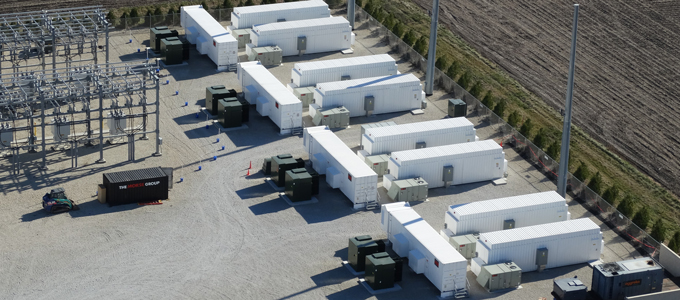
Battery image courtesy of Greensmith, a Wärtsilä Energy Solutions company.
Pumped hydro, by comparison, is a technology that takes much longer to implement. Typically, development activities (including optimising the technical solution, environmental and social assessments, arranging finance and finalising design) take two years or more to complete, and construction takes another two to three years.
How do the capital costs compare?
Pumped hydro boasts a very low price per megawatt hour, ranging from about $200/MWh to $260/MWh. Currently, battery costs range from $350/MWh to nearly $1000/MWh, with this cost reducing rapidly (costs reduced by about 25% during 2016).
According to the Lazard’s Levelized Cost Of Storage report, capital costs for pumped storage projects around the world range from about $1.5 million to $2.5 million per MW installed. The report also reveals that the cost of installing a grid-scale battery solution ranges from about $3.5 million to $7.5 million. This wide range of pricing for batteries is typical of a developing technology that is implemented in a variety of applications.
Ultimately, it’s difficult to predict how low the cost of batteries may go, but reports predict costs of lithium-ion batteries at somewhere around $120/MWh by 2025.
Considering that batteries need to be replaced once or twice a decade, with the currently available technologies, a battery facility will need to be replaced a number of times during the potential 100-year life of a pumped storage project. For batteries, assuming an economic life of 40 years, the initial cost plus replacements may mean whole-of-life costs fall in the range of $200/MWh to $330/MWh.
So, what does the future hold?
The rise of renewables will inevitably lead to a diversity of storage and supply solutions. The range of these solutions will depend on the resources of particular regions and locations. It is highly likely that the future for both batteries and pumped storage technologies will be extremely bright.
Batteries are here to stay and will undoubtedly play a significant role in future power systems as the technology develops and costs fall. However, while batteries can provide fast response times, they are yet to demonstrate their ability to provide the full range of ancillary services needed to support the grid. Pumped hydro remains a landmark, proven and reliable technology, able to meet the needs of the grid and provide sustained output for up to a century.
Ultimately, there is room for both batteries and pumped storage hydro, and they may even complement each other. Batteries are more cost-effective at delivering small amounts of stored energy over a short time at high power levels. Pumped storage is more cost-effective at storing and releasing larger amounts of stored energy. Achieving the optimum storage solution will depend on careful planning and finding the best fit for the particular circumstances.
What is certain is that both technologies will play important roles in the development and expansion of a network powered by renewable energy.
If you would like to discuss how Entura can help you with your next utility-scale battery or pumped hydro project, please contact Donald Vaughan on +61 3 6245 4279 or Nick West on +61 408 952 315.
A version of this article was first published in RenewEconomy.
About the authors
Donald Vaughan is Entura’s Technical Director, Power. He has more than 25 years of experience providing advice on regulatory and technical requirements for generators, substations and transmission systems. Donald specialises in the performance of power systems. His experience with generating units, governors and excitation systems provides a helpful perspective on how the physical electrical network behaves and how it can support the transition to a high renewables environment.
Nick West is a civil engineer at Entura with 16 years of experience, primarily in hydraulics and hydropower. Nick’s skills range from the technical analysis of the layout of hydropower projects to the preparation of contractual project documents and computational hydraulic modelling. Nick was a key team member of the Kidston Pumped Storage Project Technical Feasibility Study.
MORE THOUGHT LEADERSHIP ARTICLES
Protecting your embedded generator from islanding without breaking the bank
If you are planning to generate some of your own electricity, such as through a few wind turbines or a small solar farm, you’ll need to know about islanding.
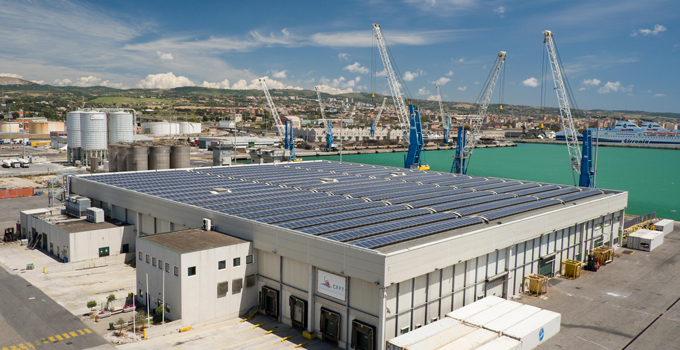
Adding new embedded generation such as wind or solar into the power grid can produce some challenges, but these challenges can be overcome. One such concern is the potential for network faults to cause islanding – in other words, when an embedded generator keeps supplying power to a grid when the grid power falls or fails, forming an island.
Understanding the cost implications of anti-islanding protection will help you negotiate with your network service provider, and may help you save money on a fit-for-purpose solution.
Network service providers (NSPs) are particularly sensitive to the risk of islanding. Although the probability of an island developing is low, the potential for islanding causes NSPs concerns about safety, about delivery of poor-quality electricity, and about the chance of damage to their equipment.
However, the high costs of some anti-islanding measures could cripple your embedded generation project, so you need to be aware of your options.
How can islanding be detected?
To protect against islanding, many NSPs will install high-speed communications circuits between your new plant and their substation or control centre. This works well: the NSP determines that an island may be forming and sends a trip signal to your generator. However, the communications circuit is expensive and, typically, the cost will come out of your pocket. The extra expense might spell the end for your power project, regardless of its size.
In the future, the gold standard in anti-islanding protection is likely to be based on synchrophasors, so that the phase angle of various parts of the grid can be compared and a tripping decision can be made without involving the NSP control centre. This method will still require high-speed communications circuits.
It is common for proponents to consider ‘passive’ anti-islanding protection based on measurements made at the generator. The usual measurements made to detect islanding are over/under voltage, over/under frequency, rate of change of frequency, and vector shift. The NSP is likely to ask what will happen if the island load matches the island generation. In a purely academic sense, if the load matches the generation then none of these elements will detect the island. But is this concern warranted in practice?
The bigger risk you will face, particularly in off-grid networks, is that the rate of change of frequency or the vector shift will trip your generator unnecessarily. It is very difficult to set vector shift protection sensitively enough that it will detect an island but not malfunction during a network fault.
What’s the best option?
If you are connecting an inverter-based system (e.g. a solar farm or a type 4 wind turbine) make sure that it has ‘active’ anti-islanding protection and that the inverter documentation discloses the method being used. In Australia, simply specifying compliance with the standard AS 4777 is sufficient.
Specialist advice on how the active anti-islanding protection operates will help you and your NSP determine whether you can avoid the need for high-speed communications and use a lower cost communications circuit such as 3G.
If you are connecting an induction generator, you might think that it is not possible to supply an islanded load. It is not impossible, just unlikely. Your NSP may not accept unlikely, when you could install a high-speed communication circuit and eliminate the risk at no additional expense to them.
Although an induction generator can sometimes supply an islanded load, it is almost impossible for it to do that at nominal voltage and frequency. Passive protections can be applied and are likely to work reliably. The rate of change of frequency protection is particularly useful in this case because, unlike vector shift, it is not susceptible to network faults as long as you select a relay with the right algorithm.
If you are connecting a synchronous machine, you’re providing valued inertia, but you may have the largest anti-islanding challenge. The synchronous generator can supply an island indefinitely and often without going far outside the nominal system voltage and frequency.
In this situation, there are three alternatives:
- You could attempt to convince your NSP that the power you provide to any island will be of the highest quality and that there is no need to panic if an island is created for a short time. The NSP will likely ask you to fund the installation of one or more new voltage transformers in their network.
- You could accept that high-speed communications really are required to safely incorporate your new generator into the network, and shoulder the expense.
- You could apply vector shift protection to your generator and accept that there will be occasional instances in which your machine will trip off and need to be restarted following a network fault.
Anti-islanding protection is complex, and it adds an extra hurdle in the process of embedding small generators in our networks, but this challenge can be resolved satisfactorily. By being better aware of your options, you’ll be much more likely to achieve a safe and cost-effective solution that meets your needs as well as the requirements of your NSP.
If you would like to find out more about how Entura can help you overcome islanding and other electrical challenges, please contact David Wilkey on +61 3 6828 9749 or Patrick Pease.
About the author
David Wilkey is Entura’s Principal Consultant, Secondary Electrical Engineering. He has more than 20 years of consulting experience in electrical engineering across Australia and New Zealand, focusing on the delivery of advisory on secondary systems and power systems engineering. David’s expertise spans all areas of electrical engineering with a particular focus on electrical protection, power system studies and rotating electrical machines.
MORE THOUGHT LEADERSHIP ARTICLES
Connecting renewables in a changing grid
As the network continues to incorporate increasing levels of inverter-based asynchronous generation such as wind and solar, connection standards in the weakening grid are tighter than ever before.
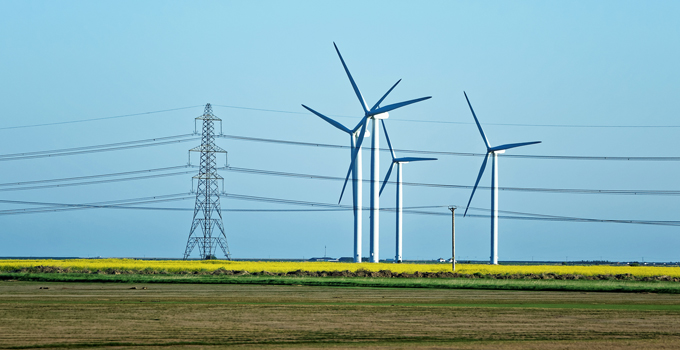
Successful grid connection is a key factor in the ability of generating plant to operate effectively and reliably , and it does not need to be a roadblock to the roll-out of new renewable generation. But connecting new solar and wind generation into a weakening transmission system can involve challenging grid connection requirements, particularly at periods of low demand.
Network faults can cause potential imbalances between network segments, and these imbalances may be exacerbated by fault ride-through (FRT) algorithms.
We have written previously that it may not be easy to understand the worst case from a system fault perspective. So we need to consider a wide range of system scenarios in combination with a broad spectrum of contingency events.
A number of factors are at play here, but we will focus particularly on the effect of FRT algorithms on the transient stability of the network.
When considering the connection, we tend to focus first on the stability at the connection point. This can lead to reducing the aggressiveness of the FRT algorithm to ensure FRT re-strikes are not caused by the power ramping back too quickly.
But this is where the seeds of the problem are sown. The weak voltage support at the point of connection leads us to withhold power longer during FRT to give voltage controls (remote or local) a chance to work immediately after fault clearance. In a stronger grid (even if we’re on a weak connection) this power deficit is not significant, but it can be crippling in a weak grid.
A fault forms two islands (momentarily). These two islands will invariably be unbalanced internally. That is, there will be a surplus of generation in one island and a surplus of load in the other. One island will then speed up and the other will slow down. If our inverter-based generator is in the island that is slowing down, then the withdrawal of energy by FRT makes the energy deficit in that island worse.
When the fault clears, the two islands need to re-establish synchronism. If the two islands have diverged then they may not be able to snap back to synchronism. This may lead to system separation and possible load shedding or worse.
What can be done when this occurs?
If a new connection runs into this problem as part of the connection studies, it may be able to get around it by tweaking the FRT controls. Setting these to return to normal control as fast as possible and to minimise the depth of power withdrawal during FRT will weaken the effect. Installing synchronous condensors may be another way to improve Short Circuit Ratio (SCR) at the connection point. This should allow more aggressive return from FRT.
On a network level, stronger interconnection and meshing should reduce the locations where faults can actually form the islands we’ve described here. This solution is possibly expensive, but network capability is currently the missing link in our Rules.
This is the problem we face as we move closer to the edge of the technical envelope. The capability of the network is not and has never been defined by the transmission elements alone. We’ve had generating units that have provided voltage and frequency stability. Now, those generating units are being displaced by wind and solar sources that do not provide the same levels of grid support.
This is where the interpretation of the Rules is going to be a threat to further renewable penetration. When assessing a new connection we routinely look for dispatch scenarios that will test the limits of grid strength. If the new connection can’t meet an appropriate standard of performance, we determine that it is this new connection that is at fault. Sometimes this is true, but sometimes it’s just that connections that came before have soaked up the available system strength.
On one level, this is an appropriate response. The new connection should not be allowed to connect if it can’t meet an acceptable negotiated level below the automatic access standard. On the other hand, it seems that the network resource is not being equitably shared. That is, people ahead in the queue have been given more than what we now understand to be a fair share.
We’re not suggesting a reallocation of those shares. That’s impractical. Nor are we suggesting that earlier connection agreements were ill-advised. We, as an industry, just know more now about how valuable and scarce network strength can be.
How will this affect future connections?
Ultimately we need a reasonable approach to negotiated access standards. Perhaps there’s a need for an adjustment to minimum access standards too. It is not practical or fair to expect that that burden be shouldered by new connections alone. Nor is it practical or fair to renegotiate the connection standards of existing plants. If we are to continue to add non-synchronous generation, we will need alternative sources of grid strength.
If you would like to find out more about how Entura can help you overcome grid connection challenges when developing your solar farm, please contact Donald Vaughan on +61 3 6245 4279 or Ranjith Perera on +61 3 6245 4272.
About the authors
Donald Vaughan is Entura’s Technical Director, Power. He has more than 25 years of experience providing advice on regulatory and technical requirements for generators, substations and transmission systems. Donald specialises in the performance of power systems. His experience with generating units, governors and excitation systems provides a helpful perspective on how the physical electrical network behaves and how it can support the transition to a high renewables environment.
Ranjith Perera is a Specialist Power Systems Engineer at Entura. He has over 22 years of experience in Australia and South-East Asia, working on customer and generation connections and broader power system analysis. Ranjith has provided power system advice on a wide range of network augmentations, network planning and system stability in Australia and internationally. These studies included option analysis in transmission planning, constraint analysis, determination of reactive support (dynamic or static) in system stability / TOV and detail load modelling in voltage stability. Ranjith also developed voltage recovery guidelines to TNSP based on regulatory requirement and customer equipment tolerances.
MORE THOUGHT LEADERSHIP ARTICLES
Planning a renewable energy journey in the Pacific
Like many stories of island journeys, the pursuit of high levels of renewable energy in the Pacific involves good planning and skilled navigation to stay safe and on course, and holds the promise of rich rewards.
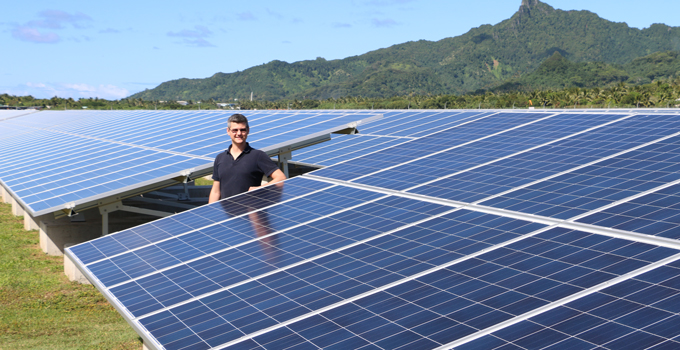
Throughout the Pacific, island communities are embracing ambitious renewable energy targets , many as high as 100% renewables over the next decade or two. This isn’t surprising, given that these islands are already experiencing significant impacts of climate change, and recognise the environmental benefits of reducing or replacing carbon-intensive diesel power generation.
There are also sound economic benefits to reducing reliance on expensive diesel fuel, which remains the single largest expense to generate power in these remote locations.
The answer to meeting targets, while also reducing carbon emissions and costs, lies in power systems that use only renewable energy. However, transitioning to higher levels of renewable energy in power systems requires confidence that the renewables can provide the energy security, self-sufficiency and system stability required by these remote communities.
Renewable energy technologies may pose some challenges for reliability and quality of power supply, but remedies can be found in enabling technologies. In an isolated power system, matching the renewable technologies with the right enabling technologies at the right moment needs detailed planning.
Every journey needs a map
As each island community’s renewable energy journey is different, careful strategic planning is needed to choose the right solution, to integrate it in the right way, and to be able to scale it up effectively to meet increasing renewable targets and electricity demands.
Entura has been helping a number of Pacific island communities embark on their renewable energy journeys. Through this experience, we’ve developed a map of the key stages of the journey:
Stage 1: Planning – In this stage, we explore the status of the current power generation assets, determine what needs to be improved, understand the renewable resource, and investigate the cost of the renewable energy journey and options for funding it.
Stage 2: Introduction of renewables – In this stage, we begin by harvesting the ‘low-hanging fruit’ – introducing the renewables that we can without enablers or network upgrades, and without changing the control philosophy. At this stage, the renewables are perceived as mostly load offset, and could reach up to 15–20% of the island’s total energy demand. Few enabling technologies are necessary at this stage.
Stage 3: Expansion of renewables and introduction of enablers – As we progress beyond 15 to 20% renewable penetration, we need to stop, review and adjust course if necessary. To progress towards 35% renewable energy contribution to the power system demand, we need to adjust the system’s operating philosophy to integrate large-scale renewables, and introduce the appropriate enabling technologies.
Stage 4: Expansion of renewables and enablers – This stage marks the largest change in how an island power system is operated. As we move beyond 50% renewables, again we should stop, review and adjust course where needed. At this stage, power systems become very complex to operate and maintain as high renewable penetration can only be achieved through a delicate balance of multiple new enabling technologies working in perfect sync. The island community could find itself investing more in enabling technologies than in renewable energy at this stage, but this could result in a higher renewable energy contribution. It is also crucial at this point to consider changes to energy delivery, relationships with customers and to the utility’s procedures, and to building its personnel capabilities.
Stage 5: Approaching 100% renewables – As most of the major changes to the power system are introduced in the earlier stages, Stage 5 is about finishing off the journey. The ‘last renewable mile’ is usually the most expensive one, so this last stage is all about identifying enabling technologies and techniques that can bridge the gap between 70–80% and 100% renewable contribution, without significant increases in the cost of electricity.
Yap’s journey to 25% renewables

Entura has helped several island communities plan and begin their renewable journeys. One example is the island of Yap in the North Pacific.
We’ve been working with the Yap State Public Service Corporation to reduce Yap’s heavy reliance on imported diesel for power generation, and to enable the island to rely as much as possible on indigenous, renewable resources through an integrated high-penetration renewable energy remote area power system (RAPS).
After decades of operating on diesel fuel only, the system will soon reach 25% renewable energy contribution. Once completed, the project aims to enable Yap to experience up to 70% instantaneous renewable penetration when conditions allow, and to deliver an annual fuel saving of up to US$500 000.
Back in 2014, Entura helped the Yap community plan their renewable journey by embarking on Stage 1. Since then, Entura has helped the Yap utility to reach Stage 2 by integrating small amounts of solar and by building its capability to install and maintain solar arrays.
The Yap renewable energy development project is now entering Stage 3, in which a new breed of high-renewable-supporting diesel generators are being installed, major works are being carried out to install three 275 kW cyclone-proof wind turbines, an island-wide solar-controlling communications network for 500 kW distributed solar PV is being rolled out, and a centralised control system is being installed.
Once these activities are completed, the Yap power system will be firmly in Stage 3, and ready for future stages in Yap’s renewable journey.
On course for 100% renewables in the Cook Islands
The Cook Islands is a group of 15 small islands in the South Pacific, to the north-east of New Zealand. Entura is helping the Cook Islands on its journey to reduce reliance on diesel fuel and achieve greater energy security, self-sufficiency and sustainability through developing renewable power systems on six islands. The country’s goal is to generate electricity from renewable energy sources on all islands by 2020.
The islands of Mauke, Mitiaro, Mangaia and Atiu have small average loads of around 100kW each. After careful planning, upgrades to the distribution grid and programs to train and build local capacity, these islands will quickly reach Stage 5 of their journeys, operating at almost 100% renewable energy using solar PV and batteries, with diesel providing backup during longer periods of renewable energy resource deficiency.
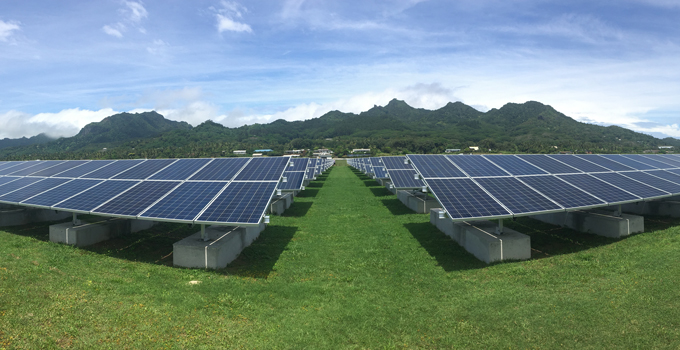
A fifth island, Aitutaki, is currently at Stage 1, finalising the planning of its renewable journey. It will rapidly jump to Stage 3 as 1 MW of solar PV, a 0.5 MW power battery, new diesel generator and centralised control system start working together to deliver a power system with a renewable contribution of up to 25%.
Rarotonga is the largest, main island in the Cook Islands and operates a complex power system requiring meticulous strategic planning. This power system is already at Stage 2, with a renewable contribution surpassing 10% due to the contribution of residential and commercial solar. Entura is helping the Rarotongan utility to move towards Stage 3 by introducing an additional 1 MW of solar PV and enabling technologies such as energy storage, which will help the system absorb even more renewable energy.
The journey continues
It is often said that the end of one journey is the beginning of another. After a community has reached 100% renewable energy, it needs to continue its journey to maintain that status through proper operation, maintenance and asset management, to secure the system for years to come. This long-term asset management challenge involves attention to both physical and human assets, including capacity building, training and skills development for individuals and organisations.
Entura is bringing practical maintenance know-how to island communities such as Yap and the Cook Islands. And, through the Entura clean energy and water institute, we are helping to boost the skills of technicians and managers. By doing so, Entura is offering island communities a guiding hand from the start of the renewable journey right through to its destination, and beyond.
If you would like to discuss how Entura can support your renewable energy journey, please contact Silke Schwartz on +61 407 886 872 or Shekhar Prince on +61 412 402 110.
A version of this article has been previously published by RenewableEnergyWorld.com
MORE THOUGHT LEADERSHIP ARTICLES
How can we manage a network with more renewables?
Can our network and market frameworks support two to three times more renewables in Australia in the next 10 to 15 years without radical or innovative actions?
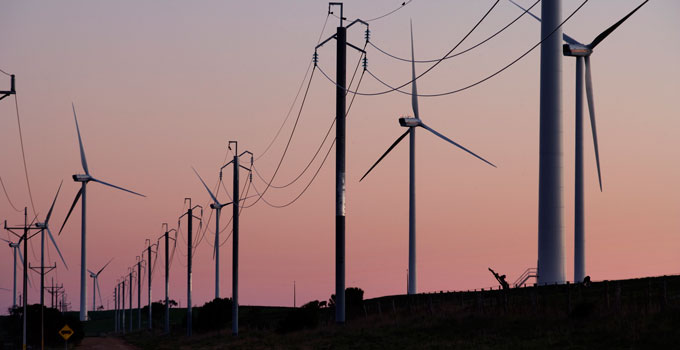
Once upon a time, we had an electricity system that was dominated by large users and large producers, and everyone else just tagged along. It needed very few points of control. Demand was easy to predict, as was the availability and cost of generation.
This is increasingly not the case.
The predictability and consistency on which the market and the network relied are being eroded by changes in how we produce and consume electricity. The efficiency benefits of the market are being undermined and it seems unable to find a ‘new normal’ that works. At the same time, the technical robustness of the electricity supply is being undermined through the reducing share of dispatch of synchronous generation.
These effects are only beginning to emerge in the wider National Electricity Market (NEM). We are suffering from increasing uncontrollability, unpredictability and variability.
Uncontrollability
As wind and solar PV replace synchronous generation in the NEM, system inertia and fault levels will steadily decline, along with the availability of frequency-control ancillary services (FCAS, or ‘spinning reserve’). More self-dispatched generation also limits the market operator’s ability to efficiently manage transmission constraints.
Unpredictability
We can use statistical models to predict demand pretty accurately unless we factor in customer storage. Installation of uncontrolled storage adds a degree of uncertainty to the demand. The current pre-dispatch followed by real-time dispatch methodology may not be capable of dealing effectively and efficiently with this uncertainty. Furthermore, the factors determining take-up of new technologies are difficult to predict. This uncertainty makes it more difficult for network planners to forecast and hence maintain capacity in the network.
Variability
Increasingly, generation dispatch patterns (and load patterns in some regions) depend on non-market variables like sun and wind (and rain). This variability can lead to a wide range of valid system dispatches, which in turn may require a wide variety of network supports, such as reactive power support from SVCs and the like. Interconnector capacity requirements vary depending on dispersion or concentration of generation relative to demand.
How might a low-synchronous-generation network be managed?
In many ways Tasmania provides a glimpse of the future in terms of how a low-synchronous-generation network may be managed. Since Tasmania has been connected to Victoria, generators, major customers and the network service provider, with support from Entura, have collaborated to extend and enhance the Tasmanian power system’s ability to cope with what is already in excess of 70% non-synchronous generation under high wind and high import on the interconnector. While the interconnector can provide some frequency support, this support is capped within the capacity of the link.
The solution in Tasmania is to reduce demand for frequency control, increase capacity to supply frequency control and actively manage fault level and inertia. This has required detailed understanding of the power system dynamics within the Tasmanian power grid as well as innovative engineering to understand and adapt hydro generators to extend their capability or flexibility. The solutions range from tweaking the control systems of individual generating units to establishing and coordinating system-wide protection schemes and constraint equations.
This experience shows that understanding the fundamental characteristics of a power system and its likely operating modes, and a common purpose and resolve to enhance its operation, can lead to an expanded technical envelope in which the electricity market can seek a cost-effective outcome. It has required collaboration across the sector including equipment manufacturers, owners of windfarms, hydropower stations, interconnectors and large customers.
Can this experience be replicated elsewhere?
Different power systems may demand a different set of solutions, but the fundamentals remain the same. A functioning AC power system needs inertia, fault level, frequency and voltage control as well as energy sources to function to an acceptable standard. Each power system will have its own sweet spot for providing these requirements. Inverter-based generators (solar, wind and batteries) can provide inertia-like responses for instance and so may reduce reliance on synchronous machines for that requirement.
A bigger question is: will the market takes us there or will it lead us down a blind alley of misguided self-interest? We are already seeing some murmurings of market reform that may ultimately lead us to the right long-term solution, but I’m not sure that we can always rely on market-led transitions, especially where the transition has not been envisaged as part of market design. This may be a misplaced leap of faith.
It’s clear that no single solution is going to sort this out in most cases. It’s also clear that some level of collaboration will be required to make the transition work smoothly. The planner must also consider technological change and customer expectations; else we run the risk of over-capitalising on solutions only for them to become redundant and ‘stranded’.
Ultimately, we know the challenges are not insurmountable but we also know that the solution is likely to be arrived at through care and deliberation rather than market meanderings.
If you would like to find out more about how Entura can help you adapt successfully to the rapidly changing market for electricity generation and energy services, contact Donald Vaughan on +61 3 6245 4279 or Wayne Tucker.
About the author
Donald Vaughan is Entura’s Technical Director, Power. He has more than 25 years of experience providing advice on regulatory and technical requirements for generators, substations and transmission systems. Donald specialises in the performance of power systems. His experience with generating units, governors and excitation systems provides a helpful perspective on how the physical electrical network behaves and how it can support the transition to a high renewables environment.
MORE THOUGHT LEADERSHIP ARTICLES
Keeping construction workers safe around high-voltage assets
Safety risks around high-voltage electrical assets are far from trivial, particularly those risks associated with earthing hazards during construction activities.
Keeping workers and contractors safe should be one of the highest business priorities. Safe systems of work and a strong safety record also ultimately benefit a business’s reputation, sustainability and long-term profitability. But achieving safety around high-voltage electrical assets means knowing your risks and how to control them, and one of these is the risk of an earthing-related hazard.
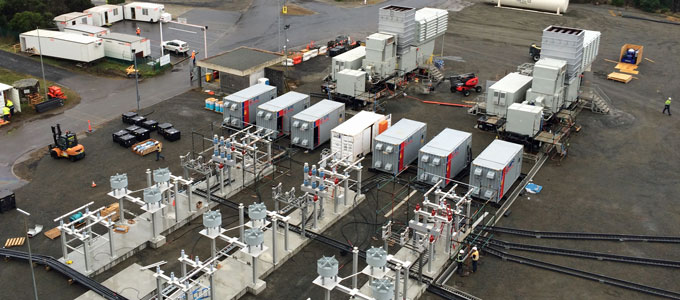
What is an earthing hazard, and how is it managed?
During a high-voltage electrical earth fault, such as a cable or equipment failure, electrical current passes from the faulted cable or equipment into the earth’s surface. One main function of an earthing system is to ensure the electrical protection system operates correctly (i.e. automatically turns the power off in a safe and controlled manner). As current passes into the ground, a localised voltage rise can be produced on the ground surface. Depending on a number of factors, this voltage rise can be harmful in the context of high-voltage installations.
As with any engineering design, the design and performance of an earth system is based on a set number of inputs. Some inputs are fixed; others are variable and may change over time. It is important for all owners of high-voltage assets to be aware of the variable components that their high-voltage earth system is designed to consider, and to ensure the safety of the system by taking corrective actions as deemed appropriate by standards and guidelines.
One such variable to consider is the safety of personnel and the public during construction activities, both within the site boundary and outside its footprint. According to Earthing Guideline 0 as referenced from Australian Standard AS 2067 (Draft 2014), the risk profile presented by the site will be affected by the increased presence of construction staff. This increased risk needs to be considered and addressed, and should result in site direction to construction staff.
Common earthing-related hazards
In general, leading contractors and asset owners pay a lot of attention to how earthing-related hazards and safety criteria may change when working in and around high-voltage assets. However, a range of common mistakes can be made during construction activities, which can introduce earthing-related hazards.
Typical mistakes include (but are not limited to):
- incorrect placement of temporary metallic security fencing or road barriers
- unnecessary removal or thinning of crushed rock layers
- exposure or breakage of subsurface earth systems
- incorrect placement of site sheds
- incorrect specification and arrangement of low-voltage electrical supplies for site sheds
- incorrect placement of equipment and infrastructure laydown areas
- incorrect planning of the work activities and procedures related to craning or elevated work platforms
- lack of site awareness regarding concealed and visible electrostatic and electromagnetic induction hazards.
What do you need to know?
High-voltage asset owners and construction contractors should ask these questions to ensure the safety of their construction personnel:
- Do I know where the high-voltage earth system is located?
- Does the work I am doing involve working inside or in close proximity to a high-voltage earth system?
- How far outside the earth system boundary do I need to consider the influence of the earth system? Is my work within this zone?
- Has this site’s earth system performance been assessed, and how recent was the last earth system audit? Based on the previous audit results, are the expected earthing-related hazard zones around the site clearly marked and controlled?
Although these questions may seem simple, without a high-voltage earthing layout drawing, a previous earthing audit report or intimate knowledge of the design criteria used to design the high-voltage earth system, you may not be able to answer the questions above with any certainty.
What are the right solutions to control defined hazards?
Solutions to possible causes of earthing-related construction hazards can vary from basic to complex. The most important thing is for the hazards to be properly assessed and managed in accordance with the risk management hierarchy of controls and the applicable national or international standards and guidelines.
In some cases, the traditional approach of earthing all metallic infrastructure may introduce hazardous voltages into the work zone rather than eliminating them.
How to build earthing safety into project planning
To ensure earthing safety during construction is not overlooked, asset owners should integrate a construction earthing assessment as a line item in their initial project schedules (during construction planning) and asset management plans. They should also provide constructors with an overview of typical construction activities that may present earthing hazards.
Because construction sites can change in layout, size and arrangement over time, it is important that a reassessment of possible introduced earthing-related hazards is also integrated into the construction plan, to ensure that earthing safety is maintained throughout the construction process.
The best results are achieved when the asset owner, the constructor and earthing specialists work together to develop appropriate project solutions to provide a safe working environment.
To discuss how Entura can help you assess your earthing safety risks, please contact Patrick Pease.
MORE THOUGHT LEADERSHIP ARTICLES
Binary states: the rise of the switching controller
The security of an electricity network is threatened by the rise of sophisticated controls on modern generating equipment. These controls lead to complex interactions with the electricity network and must be managed carefully to maintain reliable system security.
Transient stability power system modelling has almost always been the cosy domain of Laplace transforms and smooth, linear controls. The rise and abundance of power electronics in wind turbines and solar PV is changing this and adding a degree of discomfort.
These new controllers switch control modes based on internal and external variables, and as such introduce a new model phenomenon, the switch controller action. A switched controller can be particularly difficult to model accurately as it invariably switches based on an imperfect measurement of a process quantity, coupled with a time delay.
The switch will operate if the process quantity remains out of tolerance for the delay period. The imperfection in measurement can make it hard to accurately predict when or if a switching controller will operate. This can lead to a ‘Schrödinger’s cat’ scenario: the simulation continues past the switching point but we never know whether it should have switched or not, and if it had switched would the result be more or less valid? The simulation could just as correctly be in either state. Argh!
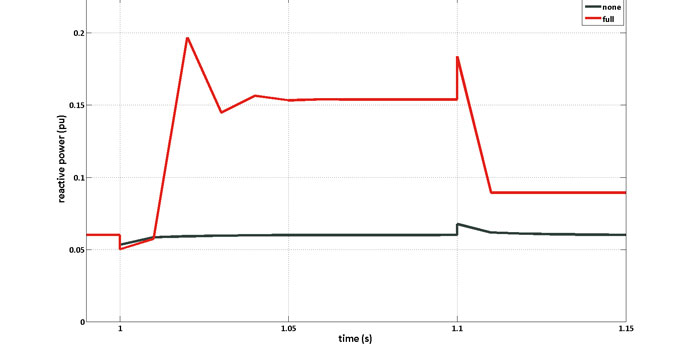
One school of thought is that more accurate and less assumptive modelling practice (such as using electro-magnetic transient simulations) might reduce this problem. However, it is highly unlikely that this form of modelling will deliver all the gains that its proponents expect. Rather, some conditions are likely to still give rise to the switching uncertainty, even with a much higher modelling cost.
Confronted with this uncertainty, how can we ensure that the modelling provides a useful insight into the limits of system operation? We’ll look at three scenarios: generator integration, system model validation, and system planning.
Generator integration
For generator integration, we typically define a set of boundary conditions and extreme event scenarios and determine whether the new generator is able to be connected within the system technical standards. This approach almost always ensures operation of the switching controllers that protect a generator from abnormal conditions, and there is no ambiguity of outcome. All good, job done? Well, no!
What if a slightly less severe system event leads to a condition in which the switching controller doesn’t activate but really should have? That’s a problem. This uncertainty requires us to define a much more complex set of scenarios to assure ourselves that a generator will comply with the technical standards.
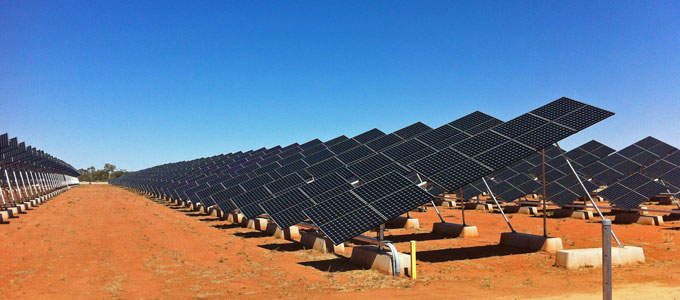
System model validation
To validate system models, we generally measure responses from generating units and the system, and this tells us how the system and the generating units have behaved. So far, so good. Although, we don’t always know the severity of the instigating fault with any certainty, and this degree of freedom can open the dreaded window of switching controller uncertainty. Again, two possibilities exist in the model space: switching or not.
We know which is right, but is it fair to assume that the model inaccuracy suggested by comparison is entirely due to the generator with the switching controller? Um, well, probably not, but sometimes, yes. This is perhaps more difficult to resolve because it’s hard to unpick the sum of small inaccuracies in the system model from the clearly aberrant behaviour of the switching controller since the aberrant behaviour may be due to those summed inaccuracies.
System planning
The number of scenarios explored in system planning studies leads us to try to ignore the contributions of single generating units, or at least to assume accuracy in those contributions. Limits to system dispatch are established based on breakpoints such as transient stability and damping ratios. But how do we know we’re studying the correct, most onerous events? Severe events will always lead to switching controllers operating. Less severe events lead to hit-and-miss operation and potentially less stable system operation at potentially lower flows, so they must become part of our planning simulation considerations.
The rise of the switching controller and the uncertainty that it brings is a worrying development , with no easy work-around. Being aware of the conundrum should lead to accounting for it in some way. When the problem first arises during connection studies, the results at this stage can inform validation tests to increase the certainty of the modelling of the switching controller. Understanding the sensitivity of the controller to voltage and frequency variations and imbalance should provide an appreciation of the need for more advanced modelling, or not.
Switching controller uncertainty demands due consideration from network simulators lest the security of the power system is compromised and we all suffer.
If you would like to find out more about how Entura can help you adapt successfully to the rapidly changing market for electricity generation and energy services, contact Donald Vaughan on +61 3 6245 4279.
About the author
Donald Vaughan is Entura’s Technical Director, Power. He has more than 25 years of experience providing advice on regulatory and technical requirements for generators, substations and transmission systems. Donald specialises in the performance of power systems. His experience with generating units, governors and excitation systems provides a helpful perspective on how the physical electrical network behaves and how it can support the transition to a high renewables environment.


